#Mrs. Mary Pemberton
Note
I was just reading through some of your meta, and was thinking about your one about Maggie being possessed by an angel. I was wondering if the fact that Nina is played by Nina Sosanya, who also played Sister Mary in season one, might be connected. I'm a bit late to the Good Omens series, has that ever been addressed? Seems odd to recast an actress as a different character in the same show, especially a show so detail orientated. Seeing as Maggie and Nina are mirrors for Aziraphale and Crowley, I'm idly wondering if they being secretly an angel, and former demon worshiper would simply would be to add an extra dimension, or if there is something more sneaky afoot. Like spies for each side watching the shop or some such.
Oh, my dear friend, it goes much deeper than that! Do not be bashful about arriving late to the game: I also did not watch S2 until about a month after it dropped, and didn't arrive on Tumblr until a month after that (literally made an account for the first time to join this fandom). The fact that I'm getting these asks at all is evidence enough that anyone can catch up. So here we go!
read on Ao3
(forgive the quality of some of these screengrabs, I'm having internet issues and Amazon is taking it out on the quality of my video)
Nina is played by Nina Sosanya, who in season 1 played Sister Mary Loquacious (I still love that name):
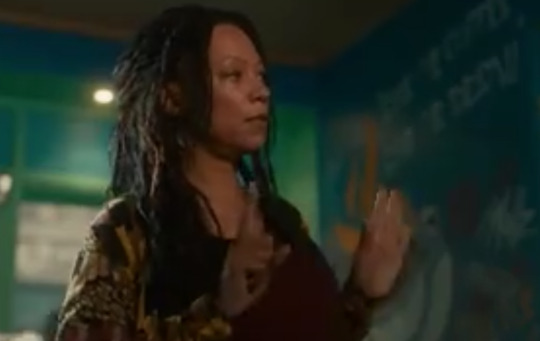

...and Maggie is played by Maggie Service, who in season 1 played a satanic nun as well, Sister Teresa Garrulous (inspired):


But the recycling of the first season's cast doesn't end there!
Shax is played by none other than the illustrious Miranda Richardson, returning after her delightful season 1 portrayal of Madame Tracy:
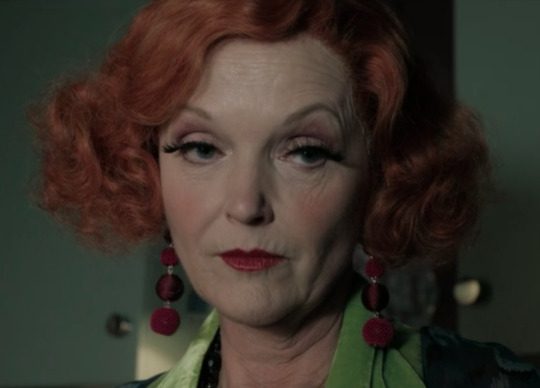
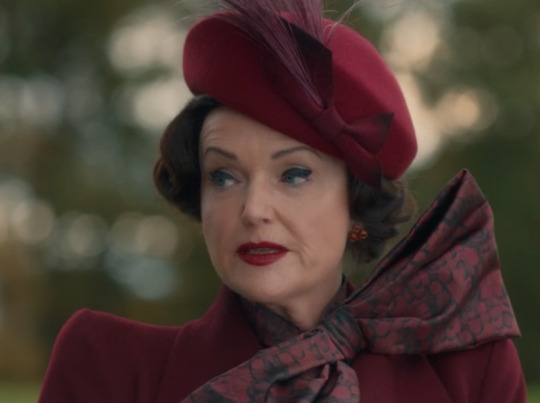
Reece Shearsmith plays Shakespeare in Season 1 and Furfur in Season 2:


Reece Shearsmith, Mark Gatiss who plays Mr. Harmony, and Steve Pemberton who plays Mr. Glozier, the [zombie] Nazis in both seasons,
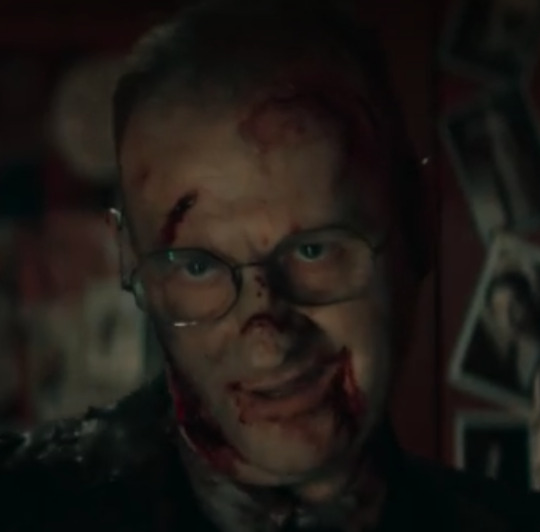

worked together on the award-winning show League of Gentlemen. An article about it even appears on David Tennant's website (which I just found today, doing research for this response!). It's a fun little read, I recommend it for anyone who's interested in "the making of" type stuff.
Gatiss was also involved in Doctor Who, which is of course was (per my humble opinion) the crowning glory of David Tennant's career until he stepped into the snakeskin boots. The article indicates that all these actors have prior relationships with David Tennant and Michael Sheen and were very pleased to be cast for this show.
But notably, only Nina and Maggie are named after their actors. Given that they also play out a whole slew of fanfiction tropes (I don't think this connection has ever been written out in meta format but it is alluded to in various YouTube clipshows) it seems to be a Doylian *Clue* that something is a little bit wrong about these characters and their alleged romance.
Other than that, I think the fact that cast is being reused only tells us two things: First, these are wonderful actors and why go looking for new talent when you already have the best? Second, they love this work and they love working together on it, and the actors wanted to return just as much as Neil wanted them to continue bringing his vision to life.
I'm glad you enjoyed Maggie is Possessed, one of my very first metas! I can see that you are going in order along my meta index. If you would like to keep reading on this topic, others have contributed their thoughts on the subject, and I've linked some choice readings below:
Can't You Hear Them? by @vidavalor
The Grand Unified Theory by @noneorother which addresses the slew of purportedly human characters that have oddly angelic/demonic traits
What's Up with Maggie? - a chain started by @iammyownproblematicfave that I and others have contributed to
I hope that this line of inquiry gets more attention in the future. If you haven't already, the docs below are great resources to bookmark as they are constantly being updated by teams of dedicated clue-searchers:
Good Omens Crackpotting Theory Tracker
Hunting for Clues
~~~
I love getting asks like this, thanks for giving me something to do while I wait for my laundry to finish. I'm so so happy that more people are arriving in this cuddly communal crucible of creativity, it's been a great community for me and I hope you join us on this whirlwind adventure of piecing together the million-piece jigsaw puzzle that Neil left for us to play with as we await Season 3!
#indigovigilance answers asks#good omens#good omens 2#good omens maggie#good omens nina#shax#shax good omens#good omens meta#furfur#reece shearsmith#miranda richardson#madame tracy#good omens production
22 notes
·
View notes
Photo
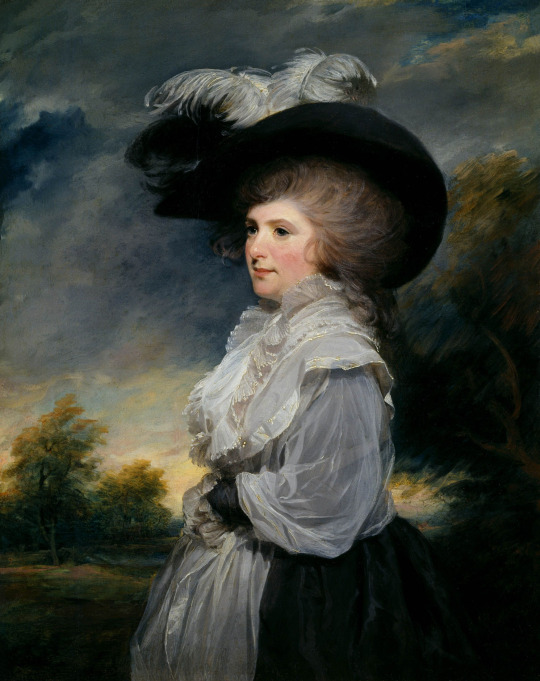
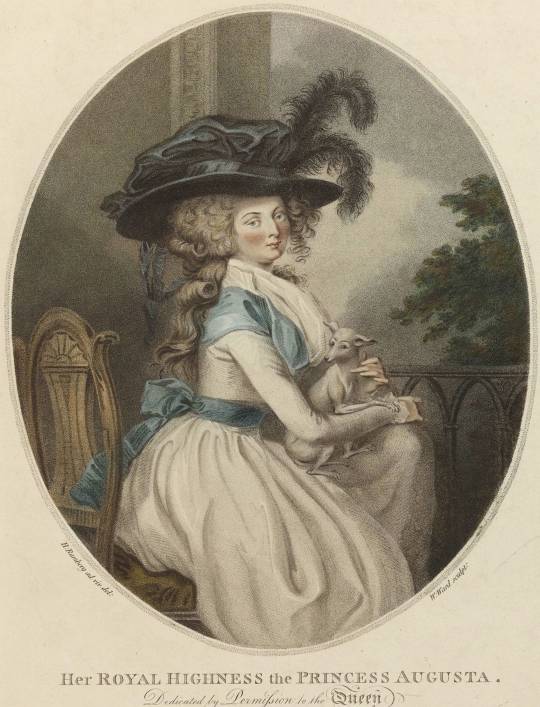
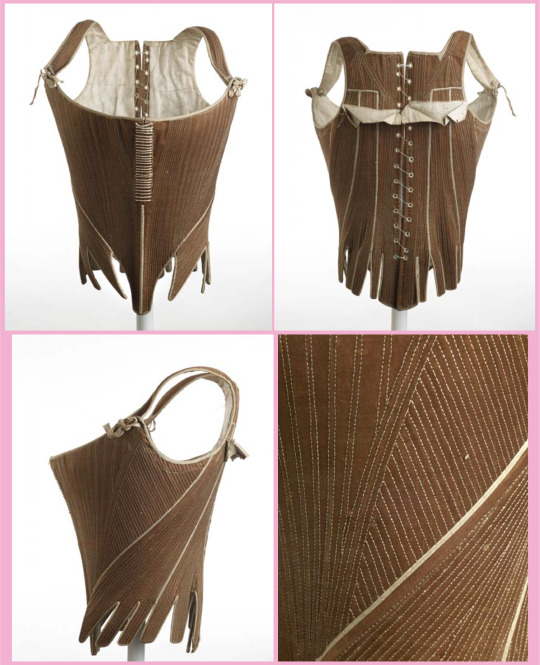
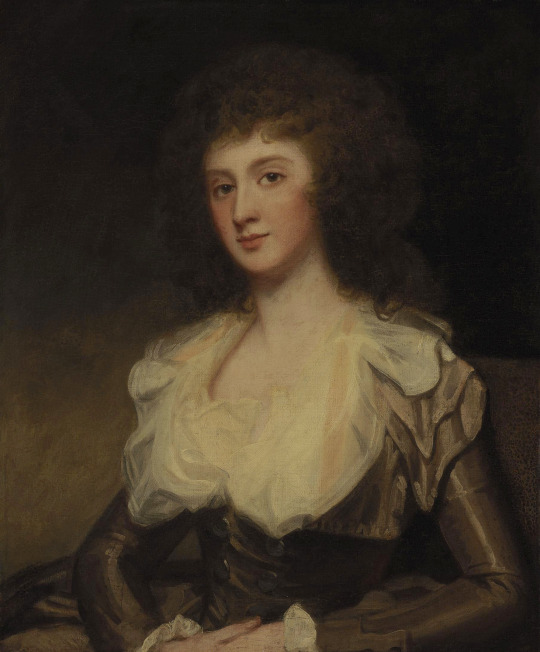
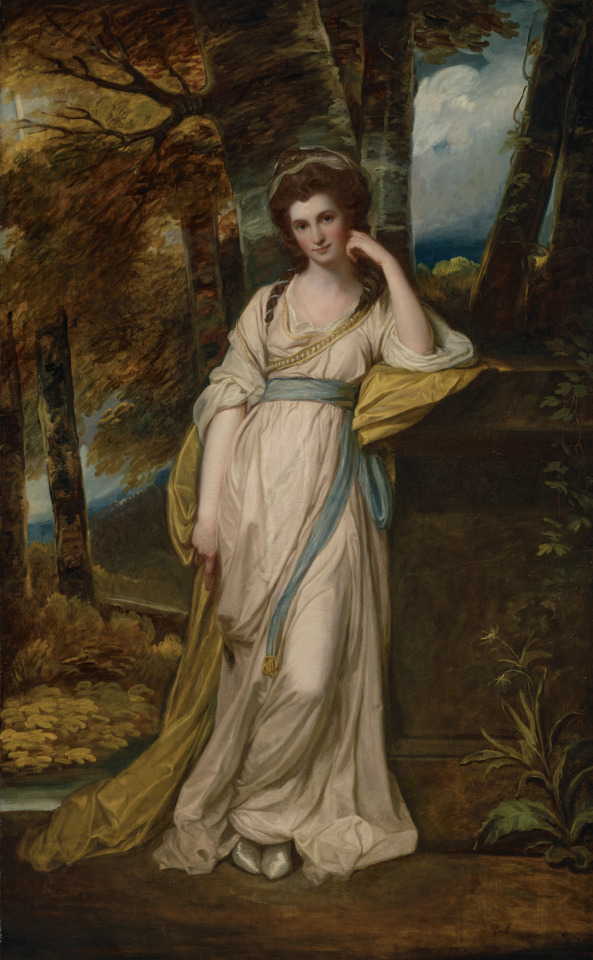
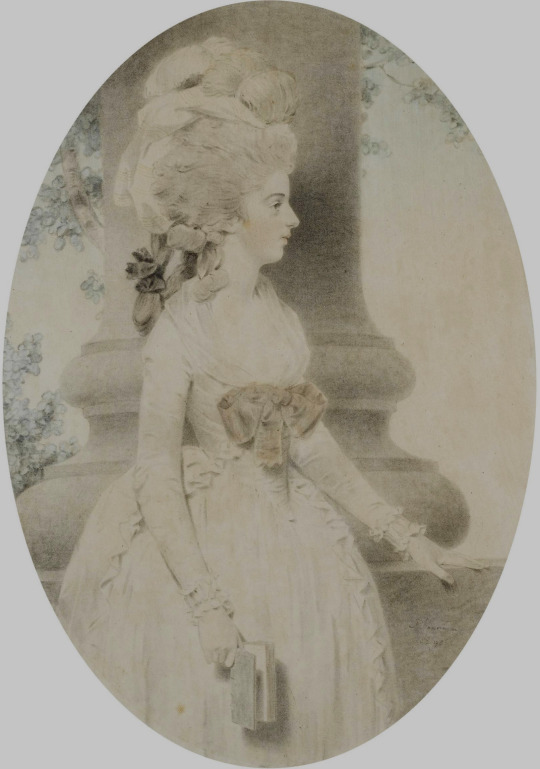
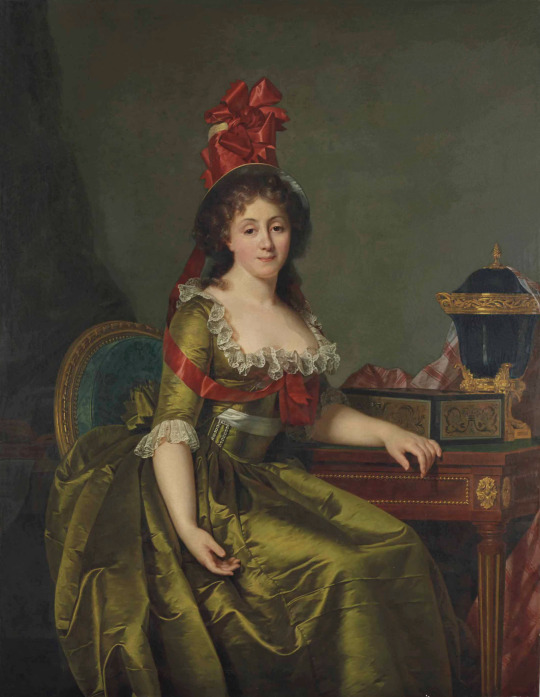
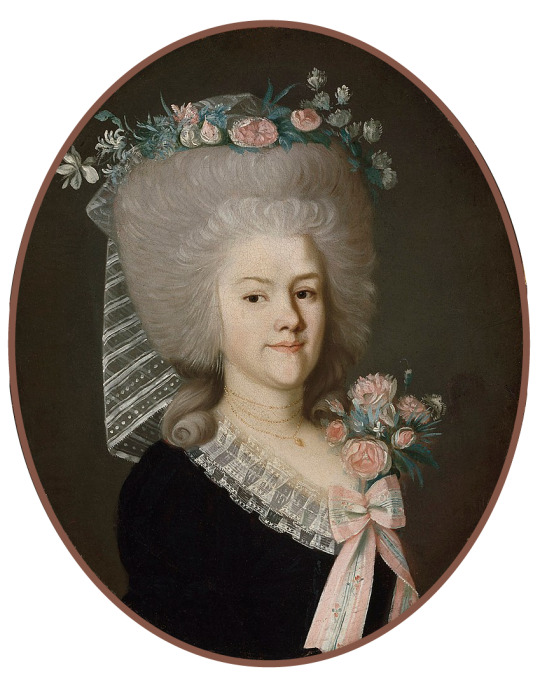
And more Big Hair (from top to bottom) -
ca. 1782-1787 Mary Constance by Sir William Beechey (Denver Art Museum - Denver, Colorado, USA). From Wikimedia; fixed spots & cracks w Pshop 2031X2560.
ca. 1788 HRH The Princess Augusta probably by William Ward after Johann Heinrich Ramberg. From pinterest.com/mama_stav/гравюры-цветные/ 7999X10466.
1780-1785 Corset of brown cotton twill with shoulder straps that tie at front with cotton (linen?) twill tape; holes down centre back for closure (Museum of London - London, UK). From their Web site 2894X3563.
Mrs. Mary Pemberton by George Romney (auctioned by Christie's). From their Web site; removed more obvious spots and cracks with Photoshop and filled in shadows 40% 1464X1767.
Mrs Deborah Jemima Maxwell (1755-1789) by George Romney (auctioned by Christie's). From their Web site 1478X2391.
1786 Miss Hodgson by John Downman (auctioned by Bonhams). From their Web site; decreased exposure and increased contrast 1629X2320.
Lady, seated, three-quarter-length, in a green satin dress and a bonnet with red ribbons by Rose-Adelaïde Ducreux (auctioned by Christie's). From their Web site; removed creases and cracks and fixed left and upper edges with Photoshop 1602X2069. This could be from the 90s.
1785-1787 Brita Elisabet Gyllenspetz by Nils Schillmark (Ateneum - Helsinki, Finland). From Wikimedia; removed flaws along top and spots throughout with Photoshop 849X1063.
#1780s fashion#Louis XVI fashion#Rococo fashion#Georgian fashion#William Beechey#picture hat#bouffant coiffure#full skirt#Princess Augusta#hat feathers#waist band#corset#Mary Pemberton#George Romney#fichu#lapels#Deborah Jemima Maxwell#close skirt#flowing skirt#shoes#Miss Hodgson#John Downman#zone bodice#bow#Rose-Adelaïde Ducreux#hat ribbons#square neckline#bertha#Nils Schillmark#floral headdress
36 notes
·
View notes
Photo

Portrait of Mrs. Mary Pemberton, half-length (c.1780). George Romney (English, 1734-1802). Oil on canvas.
The sitter was born in 1756 and was the daughter of Thomas Wale and Louisa Rodolphina von Rahten. In 1780 she married Thomas Pemberton at Shelford and lived at Shelworth.
113 notes
·
View notes
Text
Babylon Berlin
The name of this post comes from one of my favorite television series, Babylon Berlin, a lavishly produced German neo-noir drama that takes place during the final years of the Weimar Republic, or precisely where we are in the timeline of this blog.
Jan. 9, 1931 cover by Theodore Haupt.
The tumultuous Weimar years of the 1920s and early 30s represented Germany’s initial flirtation with democracy,…

View On WordPress
#Barbara Shermund#Daily News Building#Denys Wortman#Dr. Jekyll and Mr. Hyde film#Frederic March#Georgia O&039;Keeffe#I. Klein#James Thurber#Janet Flanner#John Mosher#Ladies of the Big House#Mary Petty#Murdock Pemberton#National Automobile Show 1932#Reginald Marsh#Richard Lockridge#Weimar Berlin#William Steig
1 note
·
View note
Photo

TALKIES returns to Cobb’s Weds March 2nd!
Wait, you mean to tell me that Talkies is doing ANOTHER live show? This time on Wed MARCH 2nd at
Cobb's Comedy Club
in San Francisco?! And with Sad Vicious HEADLINING?! Get outta town! GET OUT NOW!
If you missed the last show, there's a sneak peak of the first few minutes in the video at the bottom of the email. With a special appearance by Keanu Reeves!
We have discounted tix available
here
through Goldstar.
If you're feeling like a maniac, get your full priced tix
here
.
With your hosts:
George Chen, Nick Stargu, Aviva Siegel and Land Smith-Abbinante!
SPECIAL GUESTS:
Sad Vicious, Laura Weinbach and Cliff Hengst!
Sad Vicious - San Jose’s most hated band™, Sad Vicious boasts a pedigree of having played every good bar, club, and bar and grille in San Jose: Mickey’s Tavern, The Locker Room (closed), Om Ultralounge, Lucky Lil’s(closed), and Java Crossing, to name a few. Sad Vicious is pumped to wreak havoc on SF Sketchfest and super pumped to see the other bands play. It has always been our dream to play in Frisco. BTW, If anyone knows a bassist, drummer, or keyboard/efx musician, we need members NOW! Must be cool with partying, must be cool with cats=^.^=, must have own gear.
Laura Weinbach - The Hollywood Hills-born daughter of a horror filmmaker and sister of a cult comedian, Foxtails front-girl Laura Weinbach grew up in a household that embraced eccentricity. Her next-door neighbors were circus contortionists with emus and fang-toothed monkeys as pets and her childhood activities included snail hunting and spying on celebrity neighbors like Slash, Ice-T, and Larry from Perfect Strangers. Laura’s upbringing is present everywhere in Foxtails Brigade, from the lyrical imagery to the hand-drawn artwork and sophomoric Instagram cartoons. The band’s live show is a clockwork of junkyard beats, warped orchestral sonics, and Laura’s trademark voice and classical guitar intricacies with an A-List ensemble featuring performing members of Bright Eyes, Van Dyke Parks, and John Kale. The songs tackle subjects of substitute teaching in the Oakland and LA public school scenes, steak appreciation, and general unfairness awareness with a warped pop sensibility akin to influences like St. Vincent, Joanna Newsom, The Smiths, and Spoon.
Cliff Hengst - Cliff Hengst is an artist and performer, with a BFA from SFAI and current teaching position in the SFAI grad program. Hengst’s one-man play, "Mr. Akita" was recently performed at the Berkeley Art Museum as part of their Matrix program. He has exhibited his work at SFMOMA, Southern Exposure, The San Francisco Arts Commission and Gallery 16 in San Francisco. Hengst has performed and exhibited at Hauser & Wirth, Machine Project in Los Angeles and The Tang Museum at Skidmore College in New York, and most recently at the Institute of Contemporary Art, Philadelphia.
Follow us on Twitch - https://www.twitch.tv/talkiesshow/schedule
Follow us on FB -
https://www.facebook.com/talkiessf
Follow us on Instagram -
https://www.instagram.com/talkiescomedy
twitch:
https://www.twitch.tv/talkiesshow
============================================================
Talkies is the Bay Area's best unconventional, experimental, and multi-media live comedy event every first and third Friday on Zoom and Twitch (previously
in person at All Out Comedy Theater
in Oakland, CA). At Talkies, comedians, writers, improvisers, and performers work outside of their regular routines to push the boundaries of comedy; PowerPoint presentations, characters, and off-stage antics are the order of the day.
Started in the basement of San Francisco’s Lost Weekend Video, this show has been an incubator for many unique comedy talents spreading their wings on weird flights of fancy. Past guest performers have included Jamie Loftus, Ron Lynch, Myq Kaplan, Sad Vicious, Mary Mack, Johnny Pemberton, and Aparna Nancherla.
TALKIES is produced by Nick Stargu, Aviva Siegel, George Chen and Will Scovill.
#Cliff Hengst#Laura Weinbach#Aviva Siegel#George Chen#Sad Vicious#Scott Vermiere#Steuart Pittman#Land Smith#Nick Stargu#SFComedy#Cobbs Comedy#Livenation#Alternative comedy
2 notes
·
View notes
Text
Bewitched, bothered, bewildered- thoughts on‘The trial of Elizabeth Gadge’
’The trial of Elizabeth Gadge’ remains one of the most underrated and under discussed episodes of ‘Inside No.9’. However Reece Shearsmith has said on several occasions that this is one of his favourite episodes and there is much in the episode to enjoy and discuss
The episode concerns the trial of Elizabeth Gadge (Ruth Sheen- more of whom later) for witchcraft in the village of Little Happens at some point of the mid seventeenth century. The trial is overseen by local magistrate Sir Andrew Pike (brilliantly played by David Warner) who has summoned witch finders Mr Warren (Reece Shearsmith) and Mr Clarke (Steve Pemberton)
Please be aware this essay contains spoilers for the episode
NB spoilers for episode below
Before discussing the episode It is worth first looking at why the Seventeenth century was the peak period of witch trials in England, as it was in Europe (and North America later). The reason for this has been argued to be due to the religious and socio-political upheavals of the Reformation, counter reformation and resulting wars of religion and the beginnings of what we understand as the ‘nation state’ of the sixteenth and seventeenth centuries. It is worth noting witch trials in England became more common after James I came to power. James I as James VI of Scotland had a fascination with supposed witchcraft, setting up a royal commission into witchcraft, personally overseeing the torture of suspected witches and writing the Daemonologie in 1599 (As an aside-there is an interesting link here to another Inside No.9 episode ‘The Understudy’ which references ‘Macbeth’. Shakespeare included the characters of the three witches and references to witchcraft to specifically appeal to James I). It does not take a psychologist to read that James I’s fascination with /fear of witches may have stemmed from his issues with his mother Mary Queen of Scots because of her Catholic faith and her portrayal as a dangerous woman due to her alleged involvement in the murder of James’ father and the threat that she might one day try and reclaim her throne from James. There has been an argument that one of the factors in the amount of witch trials and number of women convicted in Scotland and England during the period was a result of anxiety around female power after the reigns of Elizabeth I and Mary Queen of Scots (and indeed Catherine de Medici in France). Almost 90 % of those executed for witchcraft in England were women- higher than any other European country. Of course it is no coincidence that witch trial numbers were at their highest during the period of the English Civil war and Commonwealth with their social traumas and religious disruptions. As someone with a keen interest in the history of witchcraft Reece Shearsmith would be aware of all of this and it shows in the care and attention to detail in the script. Shearsmith noted that it was predominantly women’s life that were on the line in a recent Guardian article about the inspirations for the episode where he also noted that the inclusion of Snowflake the mouse in the episode was also inspired by reading accounts of these trials.
https://www.theguardian.com/tv-and-radio/2021/apr/24/inside-no-9-bbc-steve-pemberton-reece-shearsmith-inspirations
This may be why seventeenth century witch trials (and witch anxiety) have proved a fruitful source for art during periods of trauma and political repression in the twentieth century. There are the example of Arthur Miller’s ‘The Crucible’ which uses the Salem witch trials to explore McCartyism and Carl Theodore Dreyer’s ‘Day of Wrath’ which uses the backdrop of seventeenth century witch trials to explore the Nazi occupation of Denmark and oppression of women. The motives and attitudes of those who accuse and punish suspected witches are put on trial as much the accused. This tradition continues with recent films such as the extraordinary 2017 Zambian film ‘I am not a witch’ which explores the ways women and girls around the world still have to deal with accusations of witchcraft and the resulting violence and oppression (as an aside the film also uses humour and surrealism to tackle this topic).
Two particular films have undoubtably had an influence on ‘The Trial of Elizabeth Gadge’. The first is the 1968 Hammer film ‘Witchfinder general’ starring Vincent Price as the real-life witch hunter Matthew Hopkins. It is revealed Mr Warren’s first name is Matthew, which must be a reference to the film. Like Hopkins, Mr Warren enjoys his work as a witch finder both because it brings him great power over others along with financial gain. Indeed the whole episode pays tribute to the folk horror genre of late 60s early 70s British cinema which both Pemberton and Shearsmith have spoken of as a major influence on their work over their careers. Another film which also has an influence is the 1922 Danish film ‘Haxan’ which Reece Shearsmith has narrated live on more than one occasion. He discussed the film and it’s influence on the episode in a 2018 Guardian article (linked below). One interesting feature of this film is that it uses humour to explore the ridiculous nature of belief in witchcraft. Shearsmith picked up and comments on this.
https://www.theguardian.com/tv-and-radio/2018/apr/08/reece-shearsmith-league-of-gentlemen-interview
Elizabeth Gadge fits the narrative we have had passed down about who the majority of victims of witch trials are. She is an elderly woman who has become ‘surplus’ in her society and an inconvenience to her family , particularly her son in law Thomas Nutter (Jim Howick). She has had to resort to selling herself to Richard Two Shoes (Paul Kaye) in order to pay the rent her son in law insists on charging her. In spite of all this she conducts herself with great dignity during her trial and manages to stand up to Mr Warren making a joke about his beard resembling a woman’s private parts much to the amusement of the court room. Her pleas to both her daughter and Richard Good Shoes to try and save her are genuinely affecting. Ruth Sheen delivers a terrific performance. Reece Shearsmith related in the recent Guardian article she was specifically chosen for the part, and that her performance makes the audience care about her fate.
While the tone of the courtroom scene are played as comic, the scene of Mr Warren’s interrogation are harrowing and illustrate that accusations of witchcraft, however ridiculous they are to us today, led to horrific violence against of thousands of innocent people (these scenes remind me personally of the scenes of the torture of Herlof's Marte in ‘Day of Wrath and of the elderly woman in ‘Haxan- a scene Reece Shearsmith commented on in the Guardian article).
The episode also suggests another reason, not often explored in scholarly literature, for witch trials. Namely entertainment and some sort of attention and distraction from the boredom and drudgery of life in these times. Sir Andrew Pike expresses delight that the trial has brought attention to Little Happens and that the neighbouring town of Much Happens will be envious. He also is pleased the trial could be ‘bigger than Pendle’ (a reference to the infamous Pendle witch trial of 1612). Sir Andrew takes an unhealthy pleasure in proceedings, lapping up the attention and the power he has been given over the life of an elderly woman. He even suggests extending proceedings by trying to accuse Elizabeth Gadge’s daughter. He goes from sentencing Elizabeth to death to advertising tickets for her burning without missing a beat. George Waterhouse, Richard Two-Shoes and Thomas Nutter are all shown to be selfish (and abusive) with their own reasons for wanting Elizabeth out of the way.
Reece Shearsmith obviously enjoyed portraying Mr Warren and he manages to show him as ridicious and vain while being incredibly dangerous and cruel that makes him a truly chilling character. His performance here is one of the most underrated in the series.
One question that I want to explore is why does Elizabeth Gadge kill Mr Clarke after he saves her. Steve Pemberton gives a tremendous performance as Mr Clarke, subtly conveying both his growing distain and concern about the system he is part of and at Mr Warren's behaviour (Reece Shearsmith gave particular praise for Steve's performance on the soundlcoud commentary of the episode and at the BFI screening with Steve returning this praise for Reeces performance as Mr Warren). Mr Clarke may come to realise that the work he is involved leads to the torture and killing of innocent people and how dangerous Mr Warren is. But he himself has benefitted from this system. as he notes. Rather than properly confront and address this system, he chooses to leave it in place and kill his colleague (who presumably was also a good friend at one point as his final words to Mr Warren reveal). He behaves in a highly self -righteous manner about it, asserting he has rid the world of a great evil. He also ensures he gets paid for the trial (I accept he gives Mr Warren’s fee to Elizabeth Gadge). It could be said he portrays himself as a ‘male saviour’ to Elizabeth, underestimating her agency. In his own way, Mr Clarke enjoys the power he has over Elizabeth’s life and sees her as someone who things are done to (even if it is apparently saving her life) just as much as Mr Warren and Sir Andrew. No wonder Elizabeth enjoys dispatching him.
But not only does Elizabeth Gadge avenge herself on Mr Warren and Mr Clarke, she also avenges herself on the village that put her on trial. Her final act before departing is to use the flames from Mr Warren’s pyre to set fire to the gathered crowd and the village. For me the end of this episode could almost said to be an act of vengeance not just on behalf of all the many accused characters (usually female) who usually end up killed in these stories but on behalf of all those killed in the witch trials of this period. This witch was not for burning.
Finally I just want to praise Yves Barre for his wonderful costumes for this episodes. He manages to convey the class system within Little Happens (with Sir Andrew and George Waterhouse being better dressed than most of the village) and his gorgeous costumes for Mr Warren and Mr Clarke convey how well they have done out of being witch hunters financially (their clothes are obviously well made with expensive materials and trimmings) while conveying their ideological commitment (their clothes are black and austere).
As has been noted 'The trial of Elizabeth Gadge' suffered from being the episode that directly followed onn from 'The 12 days of Christine'. However as I have hopefully shown it is an episode which continues in a fine tradition of exploring the witch trials of the seventeenth century and which brings something new and thought provoking to this tradition
9 notes
·
View notes
Text
Birds of Prey (Movie Review)

Birds of Prey (And the Fantabulous Emancipation of One Harley Quinn), from now on referred to as BOP for brevity, directed by Cathy Yan with a script by Bumblebee screenwriter Christina Hodson, follows Harley Quinn (Margot Robbie) as she carves out her own place in Gotham City after breaking up with the Joker.
After an act of destructive spectacle to make sure everyone knows she’s serious about the breakup, Harley finds out just how many people want her dead now that the Clown Prince of Crime won’t be protecting her. Special notice in that aspects gets given to Roman Sionis (Ewan McGregor), aka Black Mask, a mob boss of Gotham’s East End currently making a play for the city as a whole.
[Full Review Under the Cut]
BOP’s story structure and aesthetic presentation are an exercise in communicating perspective. Harley provides the primary framing through her narration and overall off kilter way of looking at the world. Slow motion, the tone of the music and use of on-screen text impart how she’s our main filter for these events. Moments that don’t focus on her and the occasional nonlinear order of the central narrative’s events are Harley as the narrator backfilling that information. Her narration at one point outright says to the audience, “I guess I forgot to tell you about them.” Narration often gets framed as a lazy way to impart exposition and character development, but BOP uses Harley’s narration with a purpose. In the larger subtext of this being a post-breakup recovery story, Harley literally controlling her story’s presentation ties in with taking control of her own life.
Though like she says early on, Harley’s not “the only dame in Gotham looking for emancipation.” Once she makes her grand statement to let everyone know she’s cut ties with Mr. J for good, chaos spiraling out from that ends up ensnaring several other characters in her path as she runs from the people that want her dead. Starting with the Gotham street rat, Cassandra Cain (Ella Jay Basco). A foster kid who’d rather be on the streets than living her bleak home life. The kid ends up accidentally running afoul of Sionis when her routine pickpocketing brings her into possession of a valuable item that could give him the resources to expand his control beyond his turf into all of Gotham. Harley plans to save her own skin by agreeing to deliver the kid to Roman in exchange for protection. When Harley finally crosses paths with Cass, complications prevent her from turning the kid over to the mob boss right away.
Those complications become the heart of Harley’s character arc as circumstances force her to get to know the kid. Cass sees Harley’s flippant way of going about her criminal life and sees someone who has things figured out. A notion Harley tries to dissuade her of even as her moments with the kid are the first non-alcohol or drug induced states of happiness she’s had since the movie began. Robbie and Basco’s interactions have a sisterly back and forth to them, especially in the moments when Cass proves cleverer and more resourceful than Harley anticipated.
Cass is also the center of the Venn diagram formed by the stories of Renee Montoya (Rosie Perez) and Dinah Lance (Jurnee Smollett-Bell), aka Black Canary. Renee mainly knows Cass as a recurring face at the police station every time she’s gotten caught pickpocketing. In her daily life, Renee’s job as a detective involves a lot of people either not taking her seriously or stealing credit for her work. She’s been building a case to take down Black Mask for years but gets talked down from her pursuit by everyone else at the GCPD. Perez plays Montoya with a world-weariness that sells the years of being ignored that have taken a toll on her.
Her investigation leads her to Dinah, a singer at a club owned by Sionis recently promoted to his personal chauffeur. After seeing her mother lose her life trying to protect people in Gotham, Dinah wants to keep her head down and go on surviving for as long as possible. It’s complicated by the fact she can’t stop herself from caring or wanting to get involved despite everything. A trait shown in her tender interactions with Cass, whose foster parents live in the same apartment complex, and fighting to protect a drunk Harley outside the club. Smollett-Bell and Perez get their best material playing against each other in scenes where Renee tries to convince Dinah to help inform her on Roman’s plans.
Rounding out the Birds of Prey is an interloper in Black Mask’s plans to control Gotham, Helena Bertinelli (Mary Elizabeth Winstead), aka Huntress. Her role makes her BOP’s secret weapon as she’s the lead we at first learn the least about. All we know at the start is she’s going around killing mobsters that have ties to Sionis’s operations. She doesn’t say anything but takes care of her targets with ruthless efficiency. Once she’s given the room to talk, it becomes clear that she has all the skills necessary to handle her vigilante manhunt but has a negative amount of social skills or flare for drama. Helena’s attempts at stoic one-liners are hilariously inept and Winstead plays each one perfectly.
A character I’m more mixed on than any other element of the movie is Black Mask himself. None of that is down to Ewan McGregor’s performance, who’s playing the representative of the type of controlling, entitled monster of a man that Harley doesn’t want in her life anymore after her breakup. While McGregor’s charisma can almost make you forget how awful Roman is, BOP has no interest in letting the audience forget what he’s willing to do to anyone that even slightly wrongs him. It makes for the movie’s most disturbing moments, especially when he’s sharing the screen with his torture-happy partner-in-crime, Victor Zsasz (Chris Messina). He makes his motives to kill Harley plain when he tells her he wants her dead just because he’s free to do it now that she’s out from Joker’s protection, not any specific grievance. However, that lack of specific antagonism with the main character makes him feel hollow outside of his cruelty, existing as something for the heroes to bounce off for their arcs. He’s functional and well played, but not much beyond that.
Once all the characters are gathered and their story threads have fully converged, BOP has its boldest showcase of the stellar action that makes it stand apart from other movies in the superhero genre. The movie never slouches to deliver on the goods when it comes to its leading ladies tear it up in the fights. Every one of them does something different, keeping things varied with different settings and weapons. Varied tones to the fights keep them from getting exhausting. Most of the fights focusing on Harley maintain the movie’s usual stylization, like her breaking into a police station with a glitter loaded shotgun. Which contrasts with the grounded street brawl when we first see what Dinah can do in a fight. Action scenes escalate as the movie goes, culminating in the previously mentioned final showcase. The fights up to that point already embrace Jackie Chan levels of “every object can be a weapon if necessary” and takes it to the next level. All boosted by the work of cinematographer Matthew Libatique and editors Jay Cassidy and Evan Schiff keeping visual information clear, which helps every bone crunching impact land. Pushed further by the soundtrack consisting of Daniel Pemberton’s original score and songs, plus some well-timed needle drops.
Like Christina Hodson’s previous work as a screenwriter with Bumblebee, what stands out about BOP is how it capitalizes on the wasted potential of previous entries in the film series, in this case 2016’s Suicide Squad. While in that case, the stylization and music choices were crudely plastered on, BOP uses every element with pointed purpose and feels genuinely fun rather than forced as a last-minute decision. Yan, Hodson, Robbie and the rest of the collected cast and crew put together a movie that accomplishes being exactly the kickass, glittery ride it sets out to be.
If you like what you’ve read here, please like/reblog or share elsewhere online, follow me on Twitter (@WC_WIT), and consider throwing some support my way at either Ko-Fi.com or Patreon.com at the extension “/witswriting”
#Birds of Prey#Harley Quinn#Margot Robbie#Wit's Writing#Movie Review#DC Comics#DCEU#Cathy Yan#Christina Hodson#Black Canary#Renee Montoya#Huntress#superhero movies#comics#Black Mask#Cassandra Cain#Rosie Perez#Jurnee Smollett Bell#Mary Elizabeth Winstead#Ella Jay Basco#Ewan McGregor
51 notes
·
View notes
Video
youtube
With Birds of Prey out today I thought I’d upload my video of meeting some of the Birds of Prey cast while I was in London during the Premiere last week.
I decided to get my copy of Birds of Prey #61 with the illustrations of Huntress, Cassandra Cain Batgirl and Black Canary signed by their film actor counterparts Mary Elizabeth Winstead, Ella Jay Basco and Jurnee Smollett-Bell as well as meet director Cathy Yan and Composer Daniel Pemberton.
You might remember Mary as Ramona Flowers from Scott Pilgrim or from the latest season of Fargo. Ella is actually the niece of Dante Basco aka Zuko in Avatar The Last Airbender aka Ruffio in 1990′s Hook. Jurnee has been around for quite awhile and you might remember her from True Blood, Sofia the First, Friday Night Lights with her career going all the way back to Hanging with Mr Cooper XD.
Cathy Yan has made one film before called Dead Pigs and Daniel is a pretty big composer composing such films as Spider-Verse, The Dark Crystal, Yesterday and The Man from U.N.C.L.E.
I watched the Film today and I quite enjoyed it. The action scenes were almost all engaging and short of 10 minutes I was never bored. I felt Huntress was a little underutilized and they should have used the Hyena! But all in all it was a fun film to watch. And Margot Robbie’s I, Tonya skating skills make comeback
#birds of prey review#margot robbie#harley quinn#black canary#jurnee smollett-bell#mary elizabeth winstead#scott pilgrim#fargo#i tonya#cathy yan#cassandra cain#batgirl#ella jay basco#hanging with mr cooper#batman#joker#dc comics#dceu#dc movies#superhero movies#zuko#atla#true blood#sofia the first#birds of prey#autographs#the dark crystal#spider-verse#comic books#superhero
2 notes
·
View notes
Text
June 19, 2019: Obituaries
Lovina Schrock, 91
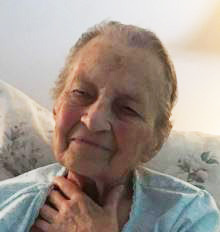
Mrs. Lovina Hostetler Schrock, 91, of Moravian Falls, passed away on Sunday, June 16, 2019 at her residence.
Lovina was born on June 11, 1928 in Stark County Ohio to Henry Hostetler and Ella Miller Hostetler.
Lovina is preceded in death by parents; husband, Mervin L. Schrock; brother, Ervin Hostetler; sister, Beulah Hochstedler and great grand daughter, Danielle Schrock.
Lovina is survived by her 5 daughters, Susan Faye Hochstetler of Canada, Joy Roselle Hileman of Ohio, Debra Kaye Yoder of Moravian Falls, Juanita Lynne Herber of Pennsylvania, Charlotte Marlene Schrock of Virginia; 5 sons, John Mark Schrock, Larry Dean Schrock, Timothy Jay Schrock, Franklin Scott Schrock all of Virginia, Frederick Allen Schrock of Moravian Falls; sisters, Mary Wittmer of Pennsylvania, Viola Mullet of Ohio; brothers, Melvin Hostetler of Ohio, Henry Hostetler of Canada; 21 grandchildren and many great grand children.
The funeral service will be held in Ohio at a later date.
Adams Funeral Home of Wilkes has the honor of serving the Schrock Family.
Nancy Winters, 5
Nancy Lee Winters, age 55, of North Wilkesboro, passed away Saturday, June 15, 2019 at Westwood Hills Nursing and Rehab Center. Nancy was born July 11, 1963 in Wilkes County to Cecil and Mandy Stanley Trivette. She loved to fish; do crafts and quilting. Ms. Winters was preceded in death by her parents; and several siblings.
Surviving are her son, Steven Winters and spouse Jessica of North Wilkesboro; daughter, Amanda Winters and spouse Zachary White of Huntington, West Virginia; a number of siblings; grandchildren, M.J. Winters and Josh Walker.
The family has requested no flowers.
Miller Funeral Service is in charge of the arrangements.
Hazel Prevette, 96
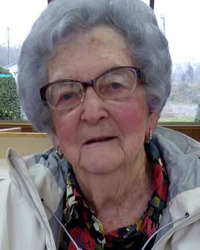
Hazel Maie Johnson Prevette, 96, of North Wilkesboro, went home to be with her Lord and Savior on Saturday, June 15, 2019 at Wilkes Senior Village.
She was born May 23, 1923 in Wilkes County, to the late William Edward Johnson and Julie Maie Combs Johnson.
Hazel was a member of Lewis Baptist Church. She loved singing and praising the Lord with her church family in the choir. She was a passionate vegetable and flower gardener.
Including her parents, she was preceded in death by: her husband, Dewey Gaither Prevette Sr.; grandchildren, Craig Williams and Pamela Taylor.
Those left to cherish and honor her memory include: daughters, Peggy Taylor (Wallace) of McGrady, Kathy Williams (Dean) of Wilkesboro; sons, D. G. Prevette, Jr. (Linda) of Wilkesboro, Kenneth Prevette (Sarah) of Lewisville; sister, Annie Lou Brown (Gene) of Millers Creek; brother, Howard Johnson of Purlear; many grandchildren, great-grandchildren, and great-great grandchildren
Funeral services wereJune 18, at Lewis Baptist Church in North Wilkesboro. Rev. Bruce Rhoades will be officiating. Burial followed in the church cemetery.
Adams Funeral Home of Wilkes and cremation services is honored to be serving the Prevette Family.
Fern Anderson, 87
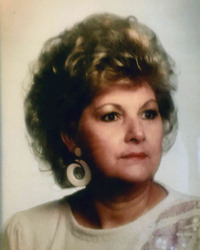
Fern Anderson, 87 Mrs. Fern Pauline Call Anderson, age 87, widow of Hobert Anderson, died on Saturday, June 15, 2019 at Villages of Wilkes.
Funeral services were June 19, at Reins-Sturdivant Chapel with Rev. Alan Bouchelle officiating. Burial was in Fishing Creek Arbor Baptist Church Cemetery.
Mrs. Anderson was born June 19, 1931 in Wilkes County to Benjamin Winfred and Carrie Elizabeth Benge Call. She was a member of Penelope Baptist Church in Hickory. Before her retirement while residing in Hickory, NC, she worked for Cline Insurance Company as a private secretary and was self-employed as a skin care specialist thru Ann Mari.
In addition to her parents she was preceded in death by her husband, Hobert Anderson; four sisters, Sylvia Call Soots, Tessie Call Foster, Florence Call Hayes Bouchelle, and Doris Call Waddell Spears; and four brothers, Julius H. Call, James P. Call, Roy "Ray" Call, and Coy "Clay" Call.
She is survived by her daughter, Linda Anderson Plemmons of North Wilkesboro; twin sons, Tracy Anderson and wife, Sandy, of Millers Creek, and Travis Van Anderson of Hickory; four grandchildren, Dana K.Anderson, Dylan L. Anderson, Doug Plemmons, and Floyd Plemmons; four great-grandchildren, Rachel C. Plemmons, Kyle P. Plemmons, Jason Sprinkle, and Elijah Foster; one great-great-grandchild, Chaselyn Kate Plemmons; one sister, Lois Call Foster of Traphill; and one brother, Thomas Jerry Call of Wilkesboro.
The latter part of her life, Mrs. Anderson spent ten years at Catawba Valley Assisted Living and three years at Wilkes Senior Villages. The family sincerely thanks the staff of both facilities for their wonderful care of their loved one.
A special thank you from the family to Shirley Bowlin for her exceptional care of our Mother.
Kenith Jones, Sr., 83
Mr. Kenith Smythe Jones, Sr., 83, of Taylorsville, passed away Thursday, June 13, 2019 at Valley Nursing Center.
Kenith was born December 18, 1935 in Fayette County, WV, the son of the late George Thomas Jones, Sr. and Inez Blanch Duncan Jones.
He was a US Army veteran, who served in Germany as a combat engineer. He had worked as a supervisor for Southern Devices before retiring and was a member of Bethel Baptist Church. He enjoyed reading Westerns, was a avid Redskin fan, and enjoyed playing golf when he was able and also enjoyed watching NASCAR.
Including his parents, he was preceded in death by: his wife, Peggy Joyce Payne Jones; four sisters, Beulah Pemberton, Doris Criss, Natella Blackwell and infant sister, Carolyn Jones; a brother, George Jones.
Those left to cherish and honor his memory include: a daughter, Patricia Jones Carter and husband, Larry, of Statesville; four sons, Kenny Jones and wife, Joan, of Taylorsville, Barry Jones and wife, Janna, of Newton, Timothy Jones and wife, Lisa, of Taylorsville, Ricky Jones of Asheville; five grandchildren, Joshua Moore, Caitlin Jones Parkhurst and husband, Matt, Ashley Jones, Tyler Jones and wife, Tiffany, Andrew Jones and fiance, Lacey Bruno; four great-grandchildren, RJ, Gracelynn, Jacob and Ezra; two sisters, Janet Payne and husband, Charles, of WV, Drema Gail Gales of VA; a brother, William Jones and wife, Carol, of WV; a sister-in-law, Christine Jones of WV; and a number of nieces and nephews.
A service was held June 17, at Bethel Baptist Church with Revs. Bill Smith and Ervel Jones officiating. Burial followed in the church cemetery with flag folding ceremony.
Pallbearers were Ken's sons and grandsons.
The family would like to express a sincere thank you for every act of kindness or visit to our loved one and also to the staff, nurses and caregivers at Valley Nursing Center.
Memorials may be made to: Alexander County Hospice, 50 Lucy Echerd Lane, Taylorsville, NC 28681.
Adams Funeral Home and cremation services is honored to be serving the Jones Family.
Terri Sigmon, 64
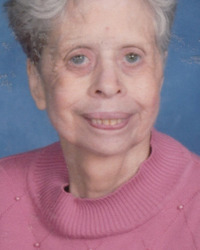
Terri Lynn Sigmon, age 64, passed away peacefully on June 11, 2019 at Valley Nursing and Rehabilitation in Taylorville and is now resting in the care of our Lord.
She was born in Hickory, NC on February 28, 1955. Prior to moving there she lived at Parklane Group home in Newton.
She was preceded in death by her parents Charles and Jane Sigmon of Hickory.
She is survived by her sister, Sandie Cline (Jimmie) of Wilkesboro, and her brothers, Robert Sigmon (Virginia) of Statesville, and Bruce Sigmon of Hickory.
Terri was a long- time member of Christ Lutheran Church in Hickory where she is best remembered for her deep faith and leading the congregation in happy birthday songs. She especially loved family gatherings during the holidays. She had a special relationship with her nephews Christopher (Tanya) of Wilkesboro, Jonathan (Ellen) and Matthew (Jessica) of Mooresville and great nephews and nieces, Ayden, Charlie, Cameron, Macie, Oren, Eli, Finley and Luke. They will cherish the memories of her.
The funeral service will be held on Thursday, June 20, at 3:00 p.m. at Christ Lutheran Church in Hickory.
The family will receive friends prior to the service from 2: 00 until 3:00 p.m. at the church. Rev. Richard Schwandt will be officiating the service. Burial will follow at Oakwood Cemetery.
In lieu of flowers memorials can be made to the memorial fund at Christ Lutheran Church, 324 2nd Ave. SE, Hickory, NC 28602.
Pallbearers for the service will be Christopher Cline, Jonathan Cline, Matthew Cline, Van Smith, Scott Wimmer, and Billy Pernell.
Vickie Cothren, 52

Vickie Cothren, 52 Miss Vickie Lee Cothren, age 52 of Roaring River, passed away Wednesday, June 12, 2019 at Woltz Hospice Home in Dobson.
Funeral services were June 15, at White Plains Baptist Church with Pastor William Souther and Bishop Peggy Horton officiating. Burial was in the church cemetery. Vickie was born October 24, 1966 in Wilkes County to James "Jim" Ervin Cothren and Georgie Lee Swaim Cothren. She was employed for 30 years with Wilkes Community College as a Library Assistant. Vickie enjoyed spending time with her great nieces and nephews who called her "Bibby" and liked sports from WFU, Chicago Bulls and Carolina Panthers. She also enjoyed cooking and most enjoyed sharing her testimony with her relationship with God.
She was preceded in death by her mother; Georgie Lee Cothren.
In addition to her father; Jim Cothren, she is survived by three sisters; Anna Church of Millers Creek, Teresa Absher of Roaring River and Jane Whitley of Hays, nieces and nephews; Amanda Miller (William), Sonya Evans (Allen), Michael Church, Ashley Mabe (Jason), Lindsay Jester (Justin) and Colby Whitley, great nieces and nephews; Elijah Miller, Asher Miller, Brenan, Nevan and Rowyn Mabe and Elizabeth Jester, Aunt Joy Swaim, Cousins; Calvin Swaim, Charlene Dancy and family, special friends and co-workers; Rebecca Kruger, Christy Earp, Misty Bass, Janet Atwood, Audrey Chapel and Donna Church and Fur Babies; Jett, Sanford, Melinda and Miss Sunshine.
Flowers will be accepted or memorials may be made to the Donor's Choice, Wilkes Community Partnership for Children PO Box 788 North Wilkesboro, NC 28659, Wilkes Community College Endowment Corporation PO Box 120 Wilkesboro, NC 28697 or Mtn. Valley Hospice 401 Technology Lane Suite 200 Mt. Airy, NC 27030.
James Ashley, Jr. 77

Mr. James Martin Ashley, Jr. age 77 of Wilkesboro, passed away Tuesday, June 11, 2019 at his home.
Funeral services were June 18, at Cub Creek Baptist Church with Pastor John Lewis and Mr. Frank Denny officiating. Burial was in Cub Creek Baptist Church Cemetery.
Mr. Ashley was born November 27, 1941 in Wilkes County to James Martin Ashley, Sr. and Geneva Sink Ashley. He was retired after 35 dedicated years at Lowe's Companies. During his employment he worked as a Store Manager and a Regional Manager. James was a loving and devoted husband, father, grandfather and friend. He was a member of Cub Creek Baptist Church where he was a Faithful Deacon, Loved and Respected Sunday School Teacher, member of the Adult Choir and Hand Bell Choirs, Good News Club Teacher, served on the Building Committee, Maintenance Committee and the Expansion Committee. James was an avid Golfer. After retirement, he enjoyed spending his time working on his cattle farm and enjoying the beautiful mountain views. He was always helping or attending the many activities with his grandchildren. James was well known for his love of his family, his church and his tremendous work ethic. His best Friend, Bear, Black-Lab mix was always at his side, waiting for the last bite of anything that James ate.
In addition to his parents, he was preceded in death by a brother; Bill Ashley.
James is survived by his wife; Judy Ann Wayne Ashley of the home, two daughters; Jamie Ashley Beamon and Lorie Ashley Kerhoulas both of Wilkesboro, a son; James Martin Ashley, III "Jimmy" of Wilkesboro, five grandchildren; Anna Kerhoulas LaFave and husband Ethan, Stephen Kerhoulas and fiancé Clair Colburn, Martin Beamon, Jacob Beamon and Nicholas Ashley, a great grandchild; Addy Billings and two sisters; Ann Ashley and Jane Ashley both of Wilkesboro.
Flowers will be accepted or memorials may be made in honor of grandchildren Anna and Jacob to the Juvenile Diabetes Research Foundation Piedmont Triad Chapter 216 W. Market Street Suite B, Greensboro, NC 27401.
Ann Whitworth, 83
Ann Hill Whitworth, age 83, passed away on Tuesday, June 4, 2019 at her home in Purlear, NC. She was born in Erwin, NC on November 12, 1935 to Frank Weaver, Sr. and Elsie Horrell Weaver.
Mrs. Whitworth was formerly employed at Liggett & Myers Tobacco Company and was retired from Duke Medical Center. She was a member of Greystone Baptist Church until her move to Purlear, NC in 2007. She was a member of New Hope Baptist Church, Purlear, NC until her passing.
She was preceded in death by her husband, Fred Roy Hill and her husband, Donald Whitworth.
She is survived by her daughter, Deborah Hill Yates of Purlear, NC; her son, Frederick A. Hill of Durham, NC; three grandsons, Ross B. Yates, and wife, Andrea of Mt. Pleasant, SC, Brett J. Yates of Millers Creek, NC, and Mark C. Yates of Purlear, NC and three great grandchildren, Finley Madison Yates, Bennett Reid Yates, and Cooper Hill Yates.
A memorial service will be held on June 29, 2019 at 2:00 PM at Greystone Baptist Church, Hillsborough Road, Durham, NC. A private burial at Maplewood Cemetery, Durham, NC will follow the memorial service. In lieu of flowers, the family requests that memorials be made to Wake Forest Care at Home Hospice, 126 Executive Drive, Suite 110, Wilkesboro, NC 28697.
Miller Funeral Service is in charge of the arrangements.
3 notes
·
View notes
Text
The Quill Seal Of Approval Awards - The Best of 2018
Hello and welcome, dear reader, to the greatest, most important awards ceremony in the history of entertainment. The Quill Seal Of Approval Awards. The award of recognition that everyone on Earth covets even though they don’t know it. For the Quill Seal Of Approval is a most esteemed prize for hard work and artistry. Better than the Golden Globes, more prestigious than the BAFTAs and guaranteed to be more diverse than the Academy Awards. You know your film, novel, TV show or video game has achieved legendary status when some random nobody on the internet says it’s the best in some obscure top 10 list that’s read by only a couple of people. That’s the true sign of success.
First, a few parish notices. Obviously this is my subjective opinion, so if you disagree with my choices, that’s fine. Go make your own list. (also remember that my opinion is 100% objective, scientific, factual and literal truth and anyone who disagrees is clearly a philistine and a dummy and a poopy-head whose mum smells of elderberries). Also please bear in mind that I haven’t been able to experience everything 2018 has to offer for one reason or another. In other words, please don’t be upset that A Star Is Born isn’t on this list. I’m sure it’s as amazing as everyone says it is. I just never got around to watching it.
Okay. Let us begin.
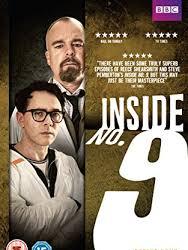
Inside No. 9 - Series 4
BBC2′s Inside No. 9, written by the League of Gentlemen’s Steve Pemberton and Reece Shearsmith, is an anthology series that’s often sadly overlooked, but it’s really worth a watch if you’re into shows like Black Mirror and The Twilight Zone, and this series in particular has been fantastic. We’ve had an episode written entirely in iambic pentameter, an episode whose chronology runs backwards, a live episode that really plays around with the format, episodes containing tragic and biting satire, and one especially twisted episode that brings out a side of Steve Pemberton we’ve never seen before. Series 4 has been a real treat from start to finish, with each episode beautifully written and expertly performed. Inside No. 9 deserves to share the same pedestal as Black Mirror, no question.

Black Panther
I’m sure everyone knows about my less than flattering views on the Marvel Cinematic Universe by now, which is what made Black Panther such a breath of fresh air for me. Stripping away all the convoluted crap, Black Panther has often been compared to The Dark Knight, and for good reason. Like The Dark Knight, this movie uses the superhero genre to tackle real social and political issues. In Black Panther’s case, exploring just what it means to be black in the modern world. Boasting an impressive cast of black actors, strong female characters, an engaging and complex antagonist, fantastic special effects and truly excellent direction from Ryan Coogler, Black Panther represents a new benchmark for Marvel, the superhero genre and the film industry in general. It proves how important and how lucrative diversity and representation in media can be, and it unintentionally shows how flawed the Marvel business model has become. The reason behind Black Panther’s success is simple. It’s because it’s bloody brilliant. And the reason it’s bloody brilliant is because Coogler was allowed to realise his own creative vision without Kevin Feige and Mickey Mouse breathing down his neck. Perhaps they should take note of that in future.

Deadpool 2
Of course Deadpool 2 is going to be on this list. Are you really surprised?
The Merc with the Mouth goes from strength to strength in the rare instance where the sequel is actually as good as, if not better than, the original. The first Deadpool was a great origin story for the character, but Deadpool 2 felt like an adventure ripped straight from the comics themselves. Crass, ultra violent and hysterically funny, Deadpool 2 is the crowning jewel of the X-Men franchise. Fan favourites such as Negasonic Teenage Warhead and Colossus return as well as new characters such as Domino, played by the exceptional Zazie Beetz, Cable, played by the astounding Josh Brolin, and Firefist, played by Julian Dennison who deserves all the success in the world because good God this kid can act!
But of course the star of the film is Deadpool himself with Ryan Reynolds once again proving beyond a shadow of a doubt that he understands this character back to front. Not only is he hysterically funny, capturing the character’s irreverent tone perfectly, he also absolutely nails the tragic underpinnings of Deadpool that make him such a wonderful character. In between the f-bombs and gore are moments of real drama and emotional pathos as the film tackles themes such as loss, discrimination, abuse and suicidal depression. All this whilst taking the piss out of 2017′s Logan.
Oh yeah, and it also features the first openly LGBT superheroes in cinematic history. Fuck you Disney! NegaYukio and Poololosus for the win! LOL! No, but seriously, now that you have the rights to X-Men back, if you try and censor Deadpool in any way, shape or form, I will kick your arse.

God Of War (2018)
“BOY!”
Yes Kratos is back, having successfully destroyed the world of Greek mythology and now has his eyes on the Norse Gods. And he has a son now. What could possibly go wrong?
Seriously though, this new God Of War is simply exquisite. While I have long admired the God Of War franchise for its interpretation and adaptation of Greek mythology, the previous games in the series have never exactly been the most sophisticated when it comes to storytelling (and the less said about the casual sexism, the better. Yes Sony, I promise I understand the thematic reasons behind playing a minigame that allows you to have sex with Aphrodite in God Of War 3, but it still doesn’t change the fact that it’s sexist as shit). God Of War 2018 changes all that with an intelligent and engaging story that allows us understand and connect with Kratos at a more personal level than we’ve ever done before. Taking place years after God Of War 3, Kratos is older, wiser and trying to raise his son Atreus in the hopes that he won’t make the same mistakes Kratos did in his past. Not only is the story amazing, continuing the franchise’s themes of vengeance and the strained relationships between parents and their children, the gameplay is also a ton of fun with many memorable moments and boss fights.
And as an added bonus, we get two strong female characters that aren’t treated like discardable sex objects. That was nice of them.
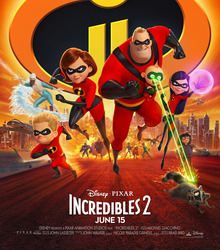
Incredibles 2
The long awaited sequel to The Incredibles finally arrived in 2018 and it did not disappoint. Incredibles 2 was everything I could have wanted and more. Continuing on from the events of the first movie, we see Elastigirl take the spotlight as she fights the Screenslaver whilst trying to persuade the worlds’ governments to lift the ban on superheroes. Meanwhile Mr. Incredible takes a back seat as he tries to reconnect with his kids Violet, Dash and Jack-Jack and prove he can be a good, supportive dad.
Continuing to draw inspiration from Fantastic Four, X-Men and Watchmen, Incredibles 2 is... well... incredible. Expanding the world he created, Brad Bird tells a smart, funny and compelling story that stands head and shoulders above the majority of superhero movie fodder we get nowadays. Elastigirl flourishes in the lead role this time around and the kids get a lot more development, the Screenslaver is a great villain that compliments the themes of the franchise wonderfully, and we get to see a whole bunch of new characters such as Voyd and the Deavor siblings as well as the return of old favourites like Frozone and Edna Mode.
Honestly, the baby alone is worth the price of admission. Hopefully we won’t have to wait another fourteen years for Incredibles 3.

Marvel’s Spider-Man
Marvel’s Spider-Man is an amazing game. But of course you knew that already. It’s made by Insomniac Games, the same guys behind Ratchet & Clank. Of course it was going to be brilliant.
Simply put, this game does for Spider-Man what the Arkham games did for Batman. Not only is it a great game with brilliant combat and fun web swinging mechanics, it also has a great story worthy of the wall crawler. Unlike the movies, which seem to continuously yank Peter Parker back into high school with each new reboot as those the poor bastard were attached to the fucker on a bungee rope, this Spidey has been fighting crime for eight years. With great power comes many responsibilities as we see him struggle to juggle crime fighting, his new job as a scientist, his commitments to helping Aunt May at the F.E.A.S.T shelter and trying to win his ex Mary Jane Watson back after a six month split. It’s a brilliant story featuring many classic villains such as Shocker and Electro as well as lesser known villains like Screwball and the criminally underrated Mister Negative who finally gets to be the central antagonist in a Spider-Man adaptation. It’s fun to play, engaging, dramatic and really emotional at points. I cried real tears at the end. What a punch to the gut that was.
OOOOOH! And we might be getting to play as Miles Morales in the sequel! I sure hope so! :D
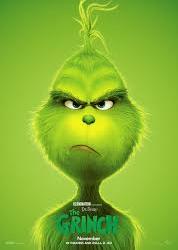
The Grinch
At this point I imagine many of you are scratching your heads.
“Really Quill? The Grinch? Illumination’s The Grinch? This deserves the Quill Seal Of Approval? Are you sure?” Yes dear reader, I’m absolutely sure. Just hear me out.
It’s true that the majority of Dr Seuss adaptations are shit. While the live action version of the Grinch starring Jim Carrey has a cult following and is fondly remembered by some, it’s still pretty crap, and even Illumination themselves screwed up royally with their adaptation of The Lorax. But this new Grinch is truly excellent. For starters, the animation is gorgeous. This is clearly the format that works best for Seuss movies. Benedict Cumberbatch does a really good job voicing the character, giving him depth and complexity beyond just being a big old meanie. The film also has something no other Seuss film has ever had before. Subtlety. Illumination have clearly learned their lesson after The Lorax. They’re no longer bashing you over the head with a moral message. They’re not trying to over-complicate a simple story by adding pointless sub-plot after pointless sub-plot. In fact the bits they do add actually feed into the main core of the narrative, as opposed to The Lorax, which just confused things. And while there are cute Minion-esque sidekicks like there are in a lot of Illumination films, The Grinch limits it to two (Max the dog and a reindeer named Fred), they’re both legitimately funny, serve an important narrative purpose and don’t distract from the more serious and emotional moments.
In all honesty, I was debating between giving the Quill Seal of Approval to The Grinch or to Bumblebee (the first legitimately good Transformers movie), but I decided to go with The Grinch because of how it handles the character and the story’s message. A lot of people scoffed at the idea of giving the Grinch a back story (and to the film’s credit they don’t force the issue or over-explain where the Grinch came from) but it’s honestly what makes this new adaptation of The Grinch so special to me. He’s gone from being a Scrooge-like monster to an anxiety filled misanthrope who associates Christmas with being alone. It may sound like a jarring change on paper, but in practice it honestly works so well and adds a whole new dimension to the Grinch. It’s treated with absolute care and sincerity and the film really earns its emotional moments, particularly at the end when we see the Grinch sit down to have Christmas dinner with the Whos.
If you haven’t already, I highly recommend you give this new Grinch a chance. You might be pleasantly surprised :)
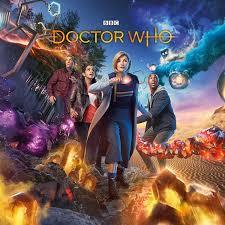
Doctor Who - Series 11
A woman?! In the TARDIS?! How absurd!
Jodie Whittaker made history as the first woman to play the Doctor and the new series doesn’t disappoint. Whittaker is predictably brilliant in the role, giving the character compassion, charm and wit. We also get a new bunch of companions (including the always brilliant Bradley Walsh as Graham) who all have some great moments in Series 11 and the relationships they form with each other is incredibly touching and fun to watch. But the writing, my God, the writing. Admittedly not every episode has been perfect, but it’s leagues above anything Moffat has given us during his disastrous reign. The majority of Series 11 has been well written and intelligent, tackling important and relevant social issues (something Doctor Who has always been doing and anyone who says otherwise is an idiot) and focusing on likeable and relatable characters rather than convoluted series arcs. We got to meet Rosa Parks, witness the partition of India, and ponder on the dangers of automation whilst the Doctor tries to save the world from bubble wrap. Oh, and the Daleks are scary again! I know! I couldn’t believe it either!
What makes this all the more remarkable is who the showrunner is. Chris Chibnall. A writer I’ve often criticised in the past for being derivative and shit, and yet somehow he’s managed to create some of the best Doctor Who I’ve seen in a long time. Not only has his writing improved dramatically since his Torchwood days, he’s also demonstrated a commitment to having diverse representation both in front of and behind the camera as well as in the scripts themselves. For the first time in what feels like an age, Doctor Who feels like Doctor Who again, and I’m ecstatically happy.

Spider-Man: Into The Spider-Verse
How come we don’t see many animated superhero movies in the cinema? Considering the medium from which superheroes came from, you’d think it would be a no-brainer. Presumably it’s because Disney have got such a strangle hold on the animation market, but that’s hopefully going to change thanks to Spider-Man: Into The Spider-Verse (or, Sony’s Repentance for The Emoji Movie).
Let’s get the obvious out of the way. The animation is gorgeous. It’s pretty much an animated comic book and it stands out as one of the most unique looking animated films in recent memory. Spider-Verse is essentially a love letter to the legacy of Spider-Man as we see multiple different versions of Spidey, including Spider-Gwen, Spider-Ham and Nicholas Cage as Ghost Rider cosplaying as Spider-Man Noir, demonstrating not only the sheer variety of Spider-Men we’ve had over the years, but also exploring what connects them together. With all these different interpretations across many different universes, the idea of Spider-Man comes to the same thing. An ordinary person who experiences tragedy and becomes something greater. It’s hopeful and inspirational in a way Spider-Man films hasn’t been for a while now (Spider-Man: Homecoming sucked donkey balls. Period).
But let’s not forget that while the film explores the Spider-Verse, the main focus is Miles Morales who finally makes his cinematic debut. Not only is it a very faithful adaptation of Ultimate Spider-Man’s origin story, Miles himself is such a great central character for the modern age and arguably has more relevance to today than Peter Parker does. The characters are funny and relatable and the story is expertly crafted and impactful. But then what do you expect from the writers and directors of The Lego Movie? (if only Disney hadn’t interfered with Solo: A Star Wars Story. We could have had it all).
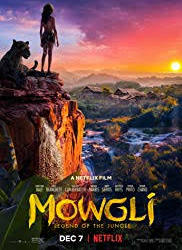
Mowgli: Legend Of The Jungle
This one kind of snuck up on me toward the end of December, but I knew the moment I saw it I had to include it on this list.
Mowgli: Legend Of The Jungle is an adaptation of The Jungle Book with Andy Serkis making his directorial debut. Yes the same guy who did the motion capture for Gollum in Lord Of The Rings and Caesar in the rebooted Planet Of The Apes movies and who totes deserves an Oscar for Best Actor (fuck you Academy Awards!), and he brings this same motion capture technology to this film. Unlike Disney’s Jungle Book, which merely rehashes the original animated film whilst somehow stripping all the charm from it, Mowgli sticks closer to the original Rudyard Kipling book. This isn’t a cheery musical. This film is often dark and intense as we see Mowgli (played wonderfully by Rohan Chand) struggle to find his place in the world. He knows he doesn’t belong with the animals in the jungle, but he doesn’t really fit in with the world of man neither. It’s an emotional and dramatic character piece brought to life by great writing, great acting and stunning special effects.
Andy Serkis has expressed a desire to do an adaptation of George Orwell’s Animal Farm, and after watching this movie, I would love to see that. If you haven’t already, go watch Mowgli: Legend Of The Jungle. It’s available to stream on Netflix and it’s truly amazing.
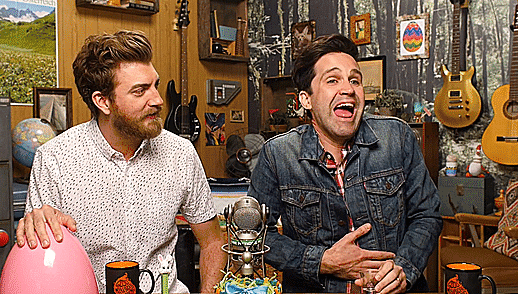
And that’s it for 2018. Congratulations to the winners of this year’s Quill Seal Of Approval Awards. Unfortunately we’re on a limited budget here on The Desolated Quill, so I can’t offer any sort of trophy or medal or anything. What I can do though is write the words ‘I’m an awesome cookie’ on a post-it note and stick it on your forehead. Will that do?
15 notes
·
View notes
Text

Cate Blanchett usa Mary Katrantzou
No último domingo (05.01), aconteceu a edição 2020 do Globo de Ouro, premiação do cinema e da televisão que dá início à temporada de red carpets deste ano.O evento ocupou o Beverly Hilton, hotel em Beverly Hills, em uma cerimônia apresentada por Ricky Gervais (sempre com seu humor ácido) em um clima ameno, sem grandes discursos ou apelos políticos, com exceção de algumas menções vindas de Patricia Arquette, Sacha Baron Cohen e Michelle Williams. A premiação também teve como apresentadores alguns nomes especiais como Daniel Craig, Charlize Theron, Margot Robbie e Kit Harington, entre outros.
A noite teve algumas surpresas entre os vencedores, que levaram ao palco estreantes como Awkwafina e Taron Egerton, e teve o filme de Quentin Tarantino, Era Uma Vez em… Hollywood, como o grande vencedor da noite, levando o prêmio de Melhor Roteiro, Melhor Filme de Comédia ou Musical, e Melhor Ator Coadjuvante (Brad Pitt).
Outra grande supresa foi 1917, o filme de guerra ganhou os maiores prêmios da noite, por Melhor Direção (Sam Mendes) e Melhor Filme de Drama. Já nas categorias de televisão, Phoebe Waller-Bridge, de Fleabag (grande favorita), subiu ao palco duas vezes para agradecer as vitórias em Melhor Série de Comédia e Melhor Atriz, como já era esperado.
Mas, como em todos os tapetes vermelhos de Hollywood, ficamos de olho nos looks dos famosos e selecionamos alguns deles que você poder conferir na nossa galeria!
This slideshow requires JavaScript.
Fotos: Getty Images
Agora, confira abaixo a lista completa de vencedores do Globo de Ouro 2020.
CINEMA
Melhor filme dramático
1917 – VENCEDOR
Irlandês
História de um Casamento
Coringa
Dois Papas
Melhor ator – Drama
Joaquin Phoenix, Coringa – VENCEDOR
Christian Bale, Ford v Ferrari
Antonio Banderas, Dor e Glória
Adam Driver, História de um Casamento
Jonathan Pryce, Dois Papas
Melhor atriz – Drama
Renée Zellweger, Judy – Muito Além do Arco-Íris – VENCEDORA
Cynthia Erivo, Harriet
Scarlett Johansson, História de um Casamento
Saoirse Ronan, Adoráveis Mulheres
Charlize Theron, O Escândalo
Melhor filme cômico ou musical
Era uma Vez em… Hollywood – VENCEDOR
Jojo Rabbit
Entre Facas e Segredos
Rocketman
Meu nome é Dolemite
Melhor diretor
Sam Mendes, 1917 – VENCEDOR
Todd Phillips, Coringa
Bong Joon-ho, Parasita
Martin Scorsese, O Irlandês
Quentin Tarantino, Era uma Vez em… Hollywood
Melhor roteiro
Quentin Tarantino, Era uma Vez em… Hollywood – VENCEDOR
Noah Baumbach, História de um Casamento
Bong Joon-ho e Han Jin-won, Parasita
Anthony McCarten, Dois Papas
Steven Zaillian, O Irlandês
Melhor atriz – Musical ou Comédia
Awkwafina, The Farewell – VENCEDORA
Ana de Armas, Entre Facas e Segredos
Cate Blanchett, Cadê Você, Bernadette?
Beanie Feldstein, Fora de Série
Emma Thompson, Late Night
Melhor ator – Musical ou Comédia
Taron Egerton, Rocketman – VENCEDOR
Daniel Craig, Entre Facas e Segredos
Roman Griffin Davis, Jojo Rabbit
Leonardo DiCaprio, Era uma Vez em… Hollywood
Eddie Murphy, Meu Nome é Dolemite
Melhor ator coadjuvante
Brad Pitt, Era uma Vez em… Hollywood – VENCEDOR
Tom Hanks, Um Lindo Dia na Vizinhança
Anthony Hopkins, Dois Papas
Al Pacino, O Irlandês
Joe Pesci, O Irlandês
Melhor atriz coadjuvante
Laura Dern, História de um Casamento – VENCEDORA
Kathy Bates, O Caso Richard Jewell
Annette Bening, O Relatório
Jennifer Lopez, As Golpistas
Margot Robbie, O Escândalo
Melhor animação
Link Perdido – VENCEDOR
Frozen 2
Como Treinar seu Dragão 3
Toy Story 4
O Rei Leão
Melhor filme em língua estrangeira
Parasita – VENCEDOR
The Farewell
Dor e Glória
Retrato de uma Jovem em Chamas
Les Misérables
Melhor canção original
(I’m Gonna) Love Me Again, Rocketman – VENCEDOR
Into the Unknown, Frozen 2
Beautiful Ghosts, Cats
Spirit, O Rei Leão
Stand Up, Harriet
Melhor trilha sonora original para filmes
Hildur Guðnadóttir, Coringa – VENCEDORA
Daniel Pemberton, Brooklyn – Sem Pai Nem Mãe
Alexandre Desplat, Adoráveis Mulheres
Thomas Newman, 1917
Randy Newman, História de um Casamento
TV
Melhor série dramática
Succession – VENCEDORA
Big Little Lies
The Crown
Killing Eve
The Morning Show
Melhor série musical ou cômica
Fleabag – VENCEDORA
O Método Kominsky
The Marvelous Mrs. Maisel
The Politician
Barry
Melhor minissérie ou filme para TV
Chernobyl – VENCEDOR
Fosse/Verdon
The Loudest Voice
Catch-22
Inacreditável
Melhor ator em série dramática
Brian Cox, Succession – VENCEDOR
Kit Harington, Game of Thrones
Rami Malek, Mr. Robot
Tobias Menzies, The Crown
Billy Porter, Pose
Melhor atriz em série dramática
Olivia Colman, The Crown – VENCEDORA
Jodie Comer, Killing Eve
Nicole Kidman, Big Little Lies
Reese Witherspoon, Big Little Lies
Jennifer Aniston, The Morning Show
Melhor ator em série musical ou cômica
Ramy Youssef, Ramy – VENCEDOR
Michael Douglas, O Método Kominsky
Bill Hader, Barry
Ben Platt, The Politician
Paul Rudd, Cara x Cara
Melhor atriz em série musical ou cômica
Phoebe Waller-Bridge, Fleabag – VENCEDORA
Christina Applegate, Disque Amiga para Matar
Rachel Brosnahan, The Marvelous Mrs. Maisel
Kirsten Dunst, On Becoming a God in Central Florida
Natasha Lyonne, Boneca Russa
Melhor ator em minissérie ou filme para TV
Russell Crowe, The Loudest Voice – VENCEDOR
Christopher Abbott, Catch-22
Sacha Baron Cohen, O Espião
Jared Harris, Chernobyl
Sam Rockwell, Fosse/Verdon
Melhor atriz em minissérie ou filme para TV
Michelle Williams, Fosse/Verdon – VENCEDOR
Kaitlyn Dever, Inacreditável
Joey King, The Act
Helen Mirren, Catarina, a Grande
Merritt Wever, Inacreditável
Melhor ator coadjuvante em série, minissérie ou filme para TV
Stellan Skarsgård, Chernobyl – VENCEDOR
Alan Arkin, O Método Kominsky
Kieran Culkin, Succession
Andrew Scott, Fleabag
Henry Winkler, Barry
Melhor atriz coadjuvante em série, minissérie ou filme para TV
Patricia Arquette, The Act – VENCEDORA
Helena Bonham Carter, The Crown
Toni Collette, Inacreditável
Meryl Streep, Big Little Lies
Emily Watson, Chernobyl
Red Carpet: Golden Globes 2020 No último domingo (05.01), aconteceu a edição 2020 do Globo de Ouro, premiação do cinema e da televisão que dá início à temporada de red carpets deste ano.
1 note
·
View note
Text
2 EXAMPLES OF 4 TYPE OF DISCOURSE
NARRATIVE DISCOURSE
(The Withdrawing Room) ( Don Quixote)
THE WITHDRAWING ROOM
BY :Charlotte Macleod’s
Though the inheritance from her dearly departed Alexander was meant to set Sarah Kelling up for life, it vanishes quickly in the face of hounding from charitable organizations and the IRS. Rather than lose her stately Back Bay brownstone, Sarah opens her home to lodgers—deciding she prefers a boarding house to the poorhouse. Soon she is serving breakfast and dinner to a cast of quirky residents, a cozy little family that would be quite happy were it not for the unpleasant presence of a certain Barnwell Augustus Quiffen—a man so rude that no one really minds when he is squashed beneath a subway car.
Sarah replaces her lost boarder quickly, and the family dynamic is restored. But when another lodger dies suddenly, suggesting the young boarding house may be cursed, it will take more than a continental breakfast to soothe Sarah’s panicked residents.
“If this is your first meeting with Sarah Kelling, oh how I envy you!” —Margaret Maron, author of The Buzzard Table“The screwball mystery is Charlotte MacLeod’s cup of tea.” —Chicago Tribune “The epitome of the ‘cozy’ mystery.” —Mostly Murder
DON QUIXOTE
BY: Miguel de Cervantes
Don Quixote is a middle-aged gentleman from the region of La Mancha in central Spain. Obsessed with the chivalrous ideals touted in books he has read, he decides to take up his lance and sword to defend the helpless and destroy the wicked. After a first failed adventure, he sets out on a second one with a somewhat befuddled laborer named Sancho Panza, whom he has persuaded to accompany him as his faithful squire. In return for Sancho’s services,
Don Quixote promises to make Sancho the wealthy governor of an isle. On his horse, Rocinante, a barn nag well past his prime, Don Quixote rides the roads of Spain in search of glory and grand adventure. He gives up food, shelter, and comfort, all in the name of a peasant woman, Dulcinea del Toboso, whom he envisions as a princess.
The story of Don Quixote’s deeds includes the stories of those he meets on his journey. Don Quixote witnesses the funeral of a student who dies as a result of his love for a disdainful lady turned shepherdess. He frees a wicked and devious galley slave, Gines de Pasamonte, and unwittingly reunites two bereaved couples, Cardenio and Lucinda, and Ferdinand and Dorothea. Torn apart by Ferdinand’s treachery, the four lovers finally come together at an inn where Don Quixote sleeps, dreaming that he is battling a giant.
EXPOSITION DISCOURSE
(Othello,)(Romeo and Juliet,)
OTHELLO
BY:SHAKESPEARS
Act I: Scene 1 of Othelloopens with a heated conversation between Iago and Roderigo that catches our interest — we realize that Iago is trying to persuade Roderigo to take part in a plan to destroy Othello. The exposition in this scene.
Sheds light on Iago's basic character, which is treacherous, vindictive, and manipulativ Unveils the primary conflict of the play: Iago, who claims to have been passed over for promotion by Othello, harbors deep resentment and hatred toward his boss.Establishes two major themes: Appearance is not the same as reality; and racism (Othello, a Moor, is black)
At the end of Act 1: Scene 1, you also learn that OthelloIs a highly honorable man.Has eloped with Brabantio's daughter, Desdemon.Is the top general whom Venice seeks for its defense in the war against the Appearance is not the same as reality; and racism (Othello, a Moor, is black) Turks,
ROMEO and JULIET
BY:SHAKESPEARS
Act I, Scene i. The thread of the feud action is here introduced with the peace-making Benvolio on the side of the Montagues and the fiery Tybalt on the Capulet side. The quarrel is suppressed when the Prince enters and, in the presence of the heads of the two houses which have thrice disturbed Verona's streets with broils, declares that death will be the penalty if civil peace is again threatened by their hatred.
Act I, Scene ii. The entrance of Juliet is prepared for; County Paris is a claimant for her hand. Romeo consents to attend the Capulet masquerade. In the chance meeting of Romeo and Benvolio by the servant as he sets out to invite guests to the feast may be read the significance of the part played by accident in determining the outcome of the play.
Act I, Scene iii. Juliet is introduced. Lady Capulet announces to her daughter in the presence of the garrulous nurse that Paris is seeking her in marriage and that she is to meet him that night at the feast.
Act I, Scene iv. Mercutio joins with Benvolio in urging the reluctant Romeo to forget his sad love affair and to enter into the spirit of the feast. The scene ends with a vague foreboding of the consequences hanging on the night's events. The complete mastery of fate over the destiny of these star-crossed lovers is emphasized in Romeo's helpless cry: "But He, that hath the steerage of my course, direct my sail" (lines 112-113).
DESCRIPTIVE DISCOURSE
(Life in the Iron Mills) (Jamaica Inn)
LIFE IN THE IRON MILLS
BY: Rebecca Harding Davis's
Life in the Iron Mills is a short story (or novella) written by Rebecca Harding Davis in 1861, set in the factory world of the nineteenth century. It is one of the earliest American realist works, and is an important text for those who study labor and women's issues.[1][2] It was immediately recognized as an innovative work, and introduced American readers to "the bleak lives of industrial workers in the mills and factories of the nation."[3]
Life in the Iron Mills was initially published in The Atlantic Monthly in April 1861.[4] After being published anonymously, both Emily Dickinson and Nathaniel Hawthorne praised the work. Elizabeth Stuart Phelps Ward was also greatly influenced by Davis's Life in the Iron Mills and in 1868 published in The Atlantic Monthly "The Tenth of January", based on the 1860 fire at the Pemberton Milin Lawrence, Massachusetts.[5]
Rebecca Harding Davis was considered one of the nation's first social historians and pioneering literary artists. She wrote to find social change for blacks, women, immigrants, and the working class throughout the Civil War. Throughout her long career, Davis challenged traditional subjects and older styles of writing.[6] Her family lived briefly in Big Springs, Alabama, before moving in 1837 toWheeling, Virginia (now West Virginia), on the Ohio River. Its iron mills and immigrant populations inspired the setting of Life in the Iron Mills.
JAMAICA INN
BY: Daphne du Maurie
Jamaica Inn is a novel by the English writer Daphne du Maurier, first published in 1936. It was later made into a film, also calledJamaica Inn, directed by Alfred Hitchcock. It is a period piece set in Cornwall in 1820. It was inspired by du Maurier's 1930 stay at the real Jamaica Inn, which still exists and is a pub in the middle of Bodmin Moor.[1] The plot follows a group of murderous wreckers who run ships aground, kill the sailors and steal the cargo.
Jamaica Inn tells the story of 23-year-old Mary Yellan, who was brought up on a farm in Helford. After her mother's death, Mary goes to live with her only surviving relative, her mother's sister, Patience Merlyn, in a bar called Jamaica Inn. Patience's husband, Joss Merlyn, is a local bully, stands almost seven feet tall and is a drunk. On arriving at the gloomy and threatening inn, Mary finds her aunt in a ghost-like state under the thumb of the vicious Joss, and soon realises that something unusual is afoot at the inn, which has no guests and is never open to the public.
Jamaica Inn, Jem leaves Mary to get the jingle,[a] but never returns. Mary has no way to get home except by walking, but when she attempts this realises the weather and distance make it impossible. At this point Francis Davey passes her on the road in a hired coach and offers her a lift home. He leaves the coach at the crossroads to walk to Altarnun. The coach is then waylaid by her uncle's band of wreckers, and the coach driver is killed.
ARGUMENTATIVE DISCOURSE
(“Pride and Prejudice) ( “Rime of the AncientMariner”)
PRIDE AND PREJUDICE
BY: Jane Austen
Pride and Prejudice The story charts the emotional development of the protagonist, Elizabeth Bennet, who learns the error of making hasty judgements and comes to appreciate the difference between the superficial and the essential. The comedy of the writing lies in the depiction of manners, education, and marriage and money in theBritish Regency.
Mr Bennet of the Longbourne estate has 5 daughters, but his property is entailed meaning that none of the girls can inherit it. Having married a woman who had no fortune, it is imperative that one of the girls marries well in order to support the others on his death. However, Jane Austen's opening line 'It is a truth universally acknowledged that a single man in possession of a good fortune must be in want of a wife' is a sentence filled with irony and playfulness. The novel revolves around the necessity of marrying for love, not simply for mercenary reasons despite the social pressures to make a good (i.e) wealthy match.
Pride and Prejudice retains the fascination of modern readers, consistently appearing near the top of lists of "most-loved books" among both literary scholars and the general public. It has become one of the most popular novels in English literature, with over 20 million copies sold, and paved the way[specify] for many archetypes that abound in modern literature. Continuing interest in the book has resulted in a number of dramatic adaptations and an abundance of novels and stories imitating Austen's memorable characters or themes.
RIME OF THE MARINER
BY: S.T Coleridge
The Rime of the Ancyent Marinere is the longest major poem by the English poet Samuel Taylor Coleridge, written in 1797–98 and published in 1798 in the first edition of Lyrical Ballads. Modern editions use a revised version printed in 1817 that featured a gloss. Along with other poems in Lyrical Ballads, it was a signal shift to modern poetry and the beginning of British Romantic literature.
.The Rime of the Ancient Mariner relates the experiences of a sailor who has returned from a long sea voyage. The mariner stops a man who is on the way to a wedding ceremony and begins to narrate a story. The wedding-guest's reaction turns from bemusement to impatience to fear to fascination as the mariner's story progresses, as can be seen in the language style:
Coleridge uses narrative techniques such as personification and repetition to create a sense of danger, the supernatural, or serenity, depending on the mood in different parts of the poem The mariner's tale begins with his ship departing on its journey. Despite initial good fortune, the ship is driven south by a storm and eventually reaches Antarctic waters. Analbatross appears and leads them out of the ice jam where they are stuck, but even as the albatross is praised by the ship's crew, the mariner shoots the bird:
1 note
·
View note
Text
Noticias de series de la semana: Adiós a 'Fresh Off the Boat'
Renovaciones
FX ha renovado Mayans MC por una tercera temporada
Apple TV+ habría renovado Servant por una segunda temporada. No hay confirmación oficial.
Netflix ha renovado Monarca por una segunda temporada
Netflix ha renovado Love Alarm por una segunda temporada
Cancelaciones
FOX ha cancelado BH90210 tras su primera temporada
ABC ha cancelado Fresh Off the Boat tras su sexta temporada
Noticias cortas
Devs, Mrs. America, A Teacher y The Old Man pasan de FX a Hulu
ABC ha encargado seis episodios adicionales para la segunda temporada de Bless This Mess, diecinueve en total.
ABC ha encargado seis episodios más para la cuarta temporada de American Housewife, veintiuno en total.
NBC encarga cuatro episodios más para la quinta temporada de Superstore, veintidós en total.
CBS encarga nueve episodios más para la cuarta temporada de MacGyver, veintidós en total.
Cedric Yarbrough (Dennis) será regular en Carol's Second Act a partir de ahora.
Jamie Gray Hyder (Katriona Azar Tamin) será regular en Law & Order: SVU a partir de ahora.
Chris Lee (Kaleb) será regular en la segunda temporada de Legacies.
El estreno de la última temporada de Blindspot se retrasa al verano de 2020.
Incorporaciones y fichajes
D'Arcy Carden (The Good Place, Barry) protagonizará el piloto de A League of Their Own junto a Abbi Jacobson.
Kristen Bell (Veronica Mars, The Good Place) narrará también el reboot de Gossip Girl en HBO Max.
Julianna Margulies (The Good Wife, ER) y Corey Stoll (House of Cards, The Strain) se unen como recurrentes a la quinta temporada de Billions. Serán Catherine Brant, profesora de sociología y escritora de éxito; y Michael Prince, un titán de los negocios proveniente de un pequeño pueblo de Indiana.
Dean Norris (Breaking Bad, Under the Dome) interpretará al padre de Dina (Lauren Ash) en la quinta temporada de Superstore.
Courtney B. Vance (American Crime Story, FlashForward) será el padre de Aretha Franklin (Cynthia Erivo) en la tercera temporada de Genius.
Gemma Whelan (Game of Thrones, The End of the F***ing World), Pedja Bjelac (Harry Potter, Genius), Camille Cottin (Call My Agent, Allied), Steve Pemberton (Inside No. 9, Happy Valley), Raj Bajaj (A Christmas Prince: The Royal Wedding), Turlough Convery (Poldark, My Mad Fat Diary) y Evgenia Dodina (In Zeiten des abnehmenden Lichts, Adam Resurrected) se unen a la tercera temporada de Killing Eve.
Kaitlyn Dever (Booksmart, Unbelievable) y Jonathan Tucker (Westworld, Kingdom) protagonizarán un episodio de Monsterland, la antología de terror de Hulu. Serán Toni, una camarera de diecinueve años y madre de una niña pequeña muy problemática; y Alex, un nuevo interés de ella.
Eric Balfour (Haven, Six Feet Under) será recurrente en la segunda temporada de Charmed como Julian, un gurú tecnológico convertido en activista social.
Anne Winters (13 Reasons Why, Grand Hotel) se une como regular a la tercera temporada de The Orville interpretando a un personaje llamado Charly Burke,
Michael McElhatton (Game of Thrones, Genius) se une a The Wheel of Time. Será Tam Al'Thor, padre adoptivo de Rand (Josha Stradowski).
Arian Moayed (Succession, Madam Secretary), Anders Holm (Workaholics, The Mindy Project), Anna Deavere Smith (Nurse Jackie, For The People), Jeff Perry (Scandal, Grey's Anatomy) y Terry Kinney (Oz, Billions) se unen a Inventing Anna. Serán Todd, el abogado de Anna (Julia Garner); Jack, el marido de Vivian (Anna Chlumsky); Maud, periodista; Lou, periodista; y Barry, corresponsal de guerra.
Merle Dandridge (Greenleaf, The Night Shift) se une como regular a The Flight Attendant. Será Kim, agente del FBI.
Tom Lipinski (The Knick, Suits) será recurrente en la segunda temporada de Snowpiercer como Kevin, miembro de Hospitality.
Henri Esteve (Revenge, Homecoming), Raigan Harris (The Dead Girls Detective Agency) y Andrew Liner serán recurrentes en la tercera temporada de Grown-ish como Javier, un activista y estudiante de posgrado cubano; Rochelle, miembro de la Black Student Union; y Rodney, un nuevo interés amoroso de Sky (Halle Bailey).
Rafael Casal (Are You Afraid of the Dark?) será recurrente en The Good Lord Bird como Cook, recluta de John Brown (Ethan Hawke).
Griffin Matthews (Dear White People, Doll & Em) se une a The Flight Attendant. Será Shane Evans, compañero de trabajo de Cassie (Kaley Cuoco).
Olivia Liang (Dating After College) será recurrente en la segunda temporada de Legacies como Alyssa Chang, estudiante de la Salvatore School.
Danny Sapani (Penny Dreadful, Harlots) se une como regular a Halo. Interpretará al capitán Jacoh Keyes, héroe de guerra que se da cuenta de que trabajar junto a su hija y su exmujer es motivo de conflicto. Charlie Murphy (Peaky Blinders, Happy Valley) será Makee, humana huérfana criada por el alien Covenant. Olive Gray (Pure, Dark Mon£y) será Miranda Keyes, comandante que se dedica a estudiar la tecnología, el lenguaje y la cultura de Covenant.
Rachel Keller (Legion, Fargo) se une como regular a la segunda temporada de Dirty John, dedicada a Betty Broderick. Será Linda Kolkena, una recepcionista contratada por Dan (Christian Slater). Emily Bergl (Shameless, Desperate Housewives), Lena Georgas (Westworld), Tiera Skovbye (Riverdale, Once Upon a Time) y Chris Mason (Broadchurch, The Fades) serán recurrentes como Marie Stewart, amiga divorciada de Betty (Amanda Peet); Janet Ravis, amiga viuda de Betty; y las versiones jóvenes de Betty y Dan.
Pósters
Nuevas series
Starz prepara un revival de Weeds con Mary-Louise Parker ambientado diez años después, ahora que la marihuana es legal en más estados.
ABC prepara un reboot de Revenge con una protagonista latina que se vengará en Malibú de una gran familia del negocio farmacéutico que causó la muerte de su madre bioquímica y una epidemia global. Contará con la ayuda de alguna cara conocida.
Netflix encarga From Scratch, limited series sobre una americana que se enamora de un siciliano mientras estudia en Italia y después intenta construir su nueva vida de vuelta en Estados Unidos junto a su hija tras la muerte de él. Basada en las memorias de Tembi Locke, escrita por su hermana Attica Locke (When They See Us, Empire), protagonizada por Zoe Saldana (Guardians of the Galaxy, Colombiana) y producida por Reese Witherspoon (Big Little Lies, The Morning Show).
Apple TV+ ha encargado Severance, thriller centrado en una empresa que busca llevar el equilibrio entre el trabajo y la vida a un nuevo nivel. Protagonizada y producida por Adam Scott (Parks and Recreation, Big Little Lies), que interpretará a un empleado con un pasado oscuro, y dirigida por Ben Stiller (Escape at Dannemora).
BET+ ha encargado Ruthless, un spin-off de The Oval (BET) centrado en Ruth (Melissa L. Williams), forzada a portarse bien en la secta con la esperanza de conseguir la libertad. Con Stephanie Charles (The Paynes), Anthony Bless (Sistas), Bobbi Baker James (House of Payne), Matt Cedeño (Power, Devious Maids), Lenny Thomas (The Blacklist), Yvonne Senat Jones (The Bobby Brown Story), Baadja-Lyne Odums (This Is Us), Jaime Callica (UnREAL), Nirine S. Brown (Wicked), Blue Kimble (Being Mary Jane) y Herve Clermont (One Life to Live).
BET+ ha encargado Bruh, creada por Tyler Perry, sobre la amistad, las citas y los trabajos de un grupo de hombres negros treintañeros. Con Barry Brewer (Games People Play), Mahdi Cocci (The Gifted), Phillip Mullings Jr. (American Soul), Monti Washington (Games People Play), Chandra Currelley (Madea's Big Happy Family), Candice Renee (Bodied) y Alyssa Goss (The Bobby Brown Story).
Fechas
Cold Call se estrena en Channel 5 el 18 de noviembre
Vienna Blood se estrena en BBC Two el 18 de noviembre
Heartstrings llega a Netflix el 22 de noviembre
The Mallorca Files se estrena en BBC One el 25 de noviembre
Merry Happy Whatever llega a Netflix el 28 de noviembre
La cuarta y última temporada de Eastsiders llega a Netflix el 1 de diciembre
Dare Me se estrena en USA Network el 29 de diciembre
La segunda temporada de Manifest se estrena en NBC el 6 de enero
Zoey's Extraordinary Playlist se estrena en NBC el 7 de enero
Lincoln Rhyme: Hunt for the Bone Collector se estrena en NBC el 10 de enero
La 2ª parte de la segunda temporada de Good Trouble se estrena en Freeform el 15 de enero
La tercera temporada de Grown-ish se estrena en Freeform el 16 de enero
La quinta temporada de Legends of Tomorrow se estrena en The CW el 21 de enero
La cuarta temporada de The Bold Type se estrena en Freeform el 23 de enero
La segunda temporada de Shrill se estrena en Hulu el 24 de enero
La séptima temporada de Brooklyn Nine-Nine se estrena en NBC el 6 de febrero
Indebted se estrena en NBC el 6 de febrero
Katy Keene se estrena en The CW el 6 de febrero
La tercera temporada de Good Girls se estrena en NBC el 16 de febrero
Tráilers y promos
Servant
youtube
Merry Happy Whatever
youtube
Upright
youtube
Green Eggs and Ham
youtube
Heartstrings
youtube
The New Pope
youtube
The Magicians - Temporada 5
youtube
Dare Me
youtube
0 notes
Link
ONE OF THE PERENNIAL questions of anyone who meets our dog Alistair is, what is he? He is certainly part- or mostly Labrador Retriever: he has a lab’s face and demeanor, down to the innate love of tennis balls. But he’s half the size of a normal lab, and has other behaviors and features that suggest some other breed, maybe a collie or another herding dog. Mostly, we just conclude, he’s a lab mixed with something small.
The American Kennel Club’s description of the lab stretches four pages and includes a litany of subjective descriptions and other criteria. Five attributes “disqualify” a dog from being a Labrador according to the AKC; Alistair fails at least two of those tests (he’s not tall enough and his tuxedo-white coloring prevents him from being a black-black Labrador). In what sense, though, is he “disqualified”? What does this make him? Less of a Labrador? Less of a dog?
Michael Worboys, Julie-Marie Strange, and Neil Pemberton’s The Invention of the Modern Dog: Breed and Blood in Victorian England offers a history of the birth of breed: that moment when dogs ceased to be dogs and became commodities — things that could be quantified, sorted, shaped, and judged. That this happened during the 19th century, and came largely out of Victorian England, is perhaps not coincidental; Victorians were in many ways obsessed with reimagining domestic spaces and who belonged in them — an obsession that was particularly acute in some of the most beloved literature of the time, from the Brontës to Dickens. Dogs in particular troubled such spaces, since they were seen simultaneously as domestic companions and as wild animals. Ivan Kreilkamp’s Minor Creatures: Persons, Animals, and the Victorian Novel focuses on this gray area inhabited by animals, tracing how Victorian writers tried to make sense of animals both inside and outside the house. Taken together, these two books offer a wide-ranging reassessment of Victorian animals as humans began to radically change how they viewed them.
Breed remains the most fundamental way we have of approaching dogs: it is the beginning and often the end of what a dog is, what defines them. It is almost always a shorthand for their personalities: golden retrievers are good with kids, Labradors energetic and obedient, pit bulls loyal and devoted. But while dogs have been with us for millennia, breeds themselves are fairly new, the very concept the invention of 19th-century England, according to The Invention of the Modern Dog. “The change to dogs being seen principally in terms of breed and as a number of distinct breeds began in the mid-Victorian period and was profound,” the authors argue; while we weren’t traditionally accustomed to think of dogs in terms of breeds, once the concept was introduced, it became the sole determining criteria of a dog’s personality — and its economic value. The concept of breed, they write,
makes dogs modern because it was a new way of thinking about, defining, and increasing the variety of forms within the species Canis lupus familiaris. Dog breeds were thoroughly Victorian inventions, influenced by industrialization, commercialization, class and gender attitudes, the rise of leisure, and evolutionary thinking.
Prior to the mid-19th century, dogs were classified by function, abilities, and health.
John Caius, for example, in his 1576 book Of Englishe Dogges, the diuersities, the names, the natures and the properties, listed five types of dogs: 1) hunting beasts, 2) those good at finding game, 3) gentle comforting companions, 4) farmers’ assistants with livestock, and 5) the “mongrels and rascal sort,” largely used as guard dogs. This focus purely on function would continue intact until the Victorian era; Comte de Buffon’s Histoire Naturelle, générale et particulière (1755) increased the number of kinds of dogs to 30, placing them on more of a sliding scale than in firm categories, and still focused entirely on their abilities. Even when writers did use the term “breed,” as Sydenham Edwards did in his 1800 Cynographia Britannica: Consisting of Coloured Engravings of the Various Breeds of Dogs Existing in Great Britain; Drawn from the Life, the word was interchangeable with “race,” “kind,” and “variety,” and thus the idea of breeds as distinct and identifiable varieties of dog had not yet taken hold. Individual animals were recognized for specific qualities and loaned out among estates for breeding purposes, but there was no specific attempt to correlate those traits with physical appearance.
At the time, the most well-organized dog culture came not from the upper classes, but from the world of dog fights and other lower-class entertainments, known as the Fancy. Bullbaiting, badger baiting, dogfighting, and rat killing: these blood sports, involving as they did sport and betting, had far more emphasis on rating specific dogs in terms of a taxonomy and hierarchy. Competitors were displayed to the crowds before fighting, so bettors could size them up, and while crowds usually favored the most aggressive-looking animal, these early “beauty shows” would set the stage for what would become the first dog shows.
In the early 1860s, the first shows brought the working-class culture of the Fancy together with livestock exhibitions and added to them a bit of the allure of the dime museum freak show. The first modern dog show, T. Dawkins Appleby’s “Monster Dog Show,” was staged in London in June 1862, a month after P. T. Barnum had staged his Great Dog Show in his American Museum in New York City. Borrowing from livestock exhibitions, dog breeders began to see physical appearance as indicative of personality and ability. But this connection wasn’t entirely tenable. With livestock, Worboys, Strange, and Pemberton explain,
physical form was likely to be an accurate guide to the amount of meat or milk they would produce, and fancy poultry and pigeons were bred for exhibition. With sporting breeds, form was taken as a proxy for function in working or sporting abilities. Thus, skull size was linked to intelligence; muzzle length to scenting; coat to warmth, protection, or visibility; and so on.
The crucial innovation of dog shows was to wed aesthetics with function: for the first time, a dog’s abilities were starting to be judged by its appearance, and its conformation to the appearance of dogs with similar abilities. It wasn’t long before appearance and aesthetic considerations began to trump working abilities. “The essence of breed,” the authors write, “was and is the division of a domesticated species by form rather than function.”
The first modern dog was a pointer named Major who belonged to a certain Mr. Smith. In the September 9, 1865, issue of the sporting magazine Field, dog aficionado John Henry Walsh identified Major as an exemplary specimen, proceeding to divide Major’s body into five parts, with a point value for each part: head and neck (30 points), frame and general symmetry (25), feet and legs (20), quality and stern (15), and color and coat (10). What was different about Walsh’s breakdown of Major was its attempt to quantify desirable dog traits and to translate working capabilities into physical appearance.
With this new set of criteria, breeders began to see dog breed as a technology that could be developed through attention to aesthetics. And as breed culture developed, it soon borrowed from phrenology and eugenics, attempting to recreate class values in the world of the dog. In a nod to phrenology, writers and fanciers ranked dogs by their skull shapes, determining intelligence accordingly: “[T]he streamlined shape of the skull [of the greyhound] with its low, sloping brow, meant that the dog was assumed to have limited intellectual faculties, enabling it to be single-minded in sighting and tracking hares.” More overtly, the emphasis on cultivating aesthetic features through breeding and developing “pure” blood lines for the improvement of the breed had all the hallmarks of the burgeoning science of eugenics. And while the authors note that “the application of science to dog breeding in this period was uneven,” it’s clear that the English fascination with breed was a complement to eugenics, and a way of testing theories on an unwilling population. With humans, eugenicists had mainly advanced positive policies: encouraging “desirables” to breed fruitfully, hoping to overwhelm the less desirable. But with dogs, breeders were “hardnosed positive and negative eugenicists: keeping the puppies they wanted, discarding those they did not, and choosing which dogs and bitches to breed.” From a eugenicist’s perspective, after all, nothing was more useful than the ability to take those you did not want and drowning them in a river.
Founded in 1873, the Kennel Club’s first rule was “in every way to promote the general improvement of dogs, dog shows, and dog trials.” But these three imperatives, one could argue (and indeed, many did argue, then and now) are entirely at odds with one another: to what extent does the general improvement of dog shows improve dogs themselves? One doesn’t have to be a card-carrying member of PETA to sense a contradiction. The most obvious example, of course, is the continuing American practice of cropping (mutilating a dog’s ears for show) and docking (cutting off all or part of a dog’s tail).
And while we’re not euthanizing dogs for minor aesthetic blemishes (well, not as often), it’s remarkable that the eugenicist impulse has remained undisturbed in the breeding world — even as it has been thoroughly denounced in other contexts. Why do we continue to believe it acceptable to select for aesthetics among dogs? Is it because they don’t have a voice of their own to protest? Or is it because pet dogs and cats straddle a bizarre divide, half-companion, half-consumer product? We acknowledge their near-human levels of empathy and friendship, while accepting a purebred market that functions almost exactly like the market for cars or phones. The concept of breed may be a shorthand for traits and personality, but its true purpose is to elevate animals into the realm of consumer goods. Lap dogs, like laptops, are infinitely customizable for the right price.
¤
At the same time that Victorian culture was changing dogs, dogs themselves were changing culture, through the Victorian novel. As Ivan Kreilkamp argues in Minor Creatures: Persons, Animals, and the Victorian Novel, the realist novel that came to dominate 19th-century literature cannot be fully appreciated without paying attention to the animals that lurk in the margins. “As England became known as a nation of shopkeepers, it was also preeminently associated with long novels and beloved domesticated animals,” Kreilkamp writes, “two cultural forms that […] developed not just in parallel but in tandem.”
One of the central preoccupations of the Victorian novel was exploring and defining domestic space — who belonged there, who was excluded, and what the roles were. At a time of rapid change, the home became a fraught space, and writers like Dickens and Eliot used the novel form to reexamine what “home” meant. “Victorian literature, especially the genre of the realist novel,” Kreilkamp explains,
was preoccupied with a project of measuring and testing the boundaries and limits of the family, asking: who belongs as an enfranchised occupant of domestic space, who may be represented as domesticated, a friend to man, native to the home and within the genre of the home?
He argues that animals — particularly dogs — were vital to this process, as figures that moved in and out of (literally and symbolically) the domestic space, who could be welcomed in as a family member while still kept at arm’s length. In the Victorian period, Kreilkamp writes, “the three major normative categories of the human, the home, and the novel are all conceptualized in relation to an animal existence that is at once marginal or excluded but symbolically central and always a shaping influence.”
Animals were particularly important as figures of sentimentality in the Victorian novel, which “came to depend importantly, for its repertoire of significations, on pets and pet keeping as demonstrations and proofs of the constitution of the home as a sentimentally charged space.” In the Brontë Sisters’ novels, for example, the role of the governess was often played against that of the pet — both were interlopers in the home, essential and yet marginalized, and in Agnes Grey and Jane Eyre, the novel hinged on under what conditions such a marginalized figure in the home might find a permanent status. The pet, like the governess, occupies the domestic space but is not of the family, and thus must petition for rights and acceptance. Focusing on the animal as sentimental, often-abused creature, to whom ethical stature could be granted, Kreilkamp argues, gave the Brontës and the Victorian novel their signature tropes.
For Dickens, the dog was an even more marginalized figure. In Bleak House, Great Expectations, and others of Dickens’s classics, the question was once again how and under what condition an orphan might find a way into the safe space of the home. While Esther and Pip find ways in through luck, perseverance, and their innate goodness, the dogs remain on the outside, reminders of social oblivion. In Great Expectations, for example, “the possibility or threat of being seen or treated as a dog bears a strong correlation to an anxiety of being forgotten.” Dogs, like orphans, are creatures of the street, without protection beyond what sympathy they can muster through their pathetic state.
From the Brontës and Dickens, Kreilkamp moves to Eliot, Hardy, Arthur Conan Doyle, and finally to South African novelist Olive Schreiner. In the process, he also moves away from dogs. In what is perhaps the most famous passage from Eliot’s Middlemarch, the central figure is a not a dog but a squirrel: “If we had a keen vision and feeling of all ordinary human life, it would be like hearing the grass grow and the squirrel’s heart beat, and we should die of that roar which lies on the other side of silence.” Eliot’s point, of course, is that ordinary life is made up of so many unremarked and unnoticed details that to focus on them all would kill us, but in searching for a metaphor to capture the depths of human life, she opts for the tiny heart of a tiny squirrel: something ubiquitous but perpetually marginal, flitting about the edges of human culture. Through such analogies, Kreilkamp suggests, Eliot
establishes a pattern of imagery according to which the human relationship to the animal becomes a test case for the care of others and the possibility of autonomy or a companionship that might exist without dependency, as opposed to a parasitic form of relationship in which one being utterly submits to the other.
Horses and sheep, as well, become important in Minor Creatures’s trajectory, as Victorian novelists further pushed the possibility of what does and doesn’t deserve rights. Kreilkamp’s argument falters as it becomes more diffuse, for the simple reason that domesticated pets exist (at least with regards to the human imagination) in a different world from livestock or wild creatures. The squirrel doesn’t evoke the same questions of domesticity, companionship, or sentimentality; the lamb only enters into the space of the home as dinner. Minor Creatures would’ve done well to focus solely on dogs (or dogs and cats, though the latter don’t get much play here) — not only is there ample material to work with already, but it would have been cleaner, and more focused. Even with the multiple valences in which dogs appear in these works, they still constitute a sole category.
Even with a narrower focus, the problem here is that all animals, domestic or wild, resist any kind of totalizing philosophy. Like a good academic, Kreilkamp opts for sweeping and definitive statements:
This chapter argues that this identification of Jane Eyre as an ‘animal’ (she is later compared to, among other images, a bird in a cage and a slaughtered lamb) offers a clue to a much broader discourse and logic and informs all of the novels published by the Brontë sisters in 1847.
The contention that animals would be the key to all the novels presupposes a central, symbolic place for the animal, which is impossible to sustain. What John Berger wrote of zoo animals is true of animals generally: they are perpetually out of focus, and all the concentration we can muster will never quite be enough to centralize them.
But at the same time novelists were reckoning with the fact that dogs were perpetually just out of frame and just outside the threshold of the house, breeders were looking to regularize them, codify them, taxonomize and hierarchize them in new ways. Kreilkamp’s novels stretch the period between the founding of the Royal Society for the Prevention of Cruelty to Animals in 1824 and the passage of the Cruelty to Animals Act in 1876, overlapping the same period that Worboys, Strange, and Pemberton cover. It was a time in which the role of animals (and the dog in particular) was being radically rethought. Minor Creatures and The Invention of the Modern Dog make for a strong complement, for just as dogs were being retooled as eugenics-inspired home commodities, they were being employed as symbolic tropes to help refine what the home could be.
¤
Colin Dickey is the author, most recently, of Ghostland: An American History in Haunted Places.
The post Companion and Commodity: The Victorian Dog appeared first on Los Angeles Review of Books.
from Los Angeles Review of Books http://bit.ly/2RDmOEo
via IFTTT
0 notes
Text
The Woman’s Gaze - Undaunted at the Art Gallery of Alberta
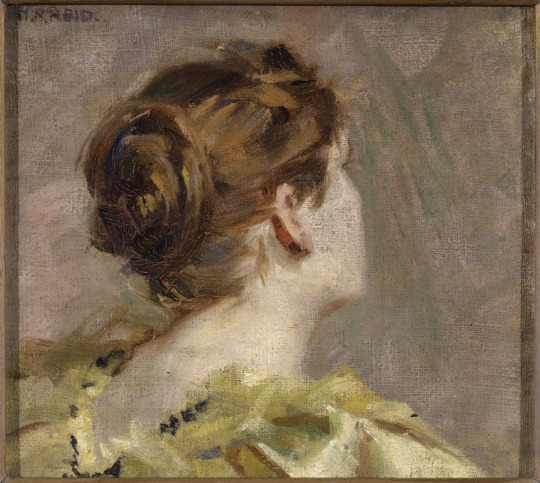
Study of a Head - Mary Hiester Reid c. 1874-1921; Art Gallery of Alberta Collection, purchased in 1982 with funds donated by the Women's Society of The Edmonton Art Gallery.
Her head is turned, gazing at an unknown object, or into an uncertain future. What is certain is that the woman wielding the brush, Mary Hiester Reid, is an unsung brick in the foundation of Canadian art history.
Reid, the artist behind the “cover image” for Undaunted; Canadian Women Painters of the 19th Century now on at the Art Gallery of Alberta, was one of Canada’s most prominent and prolific women artists of the late 19th and early 20th centuries. She is one of the 30 artists featured in the exhibition, says curator Laura Ritchie who is also the AGA Exhibitions Manager. “This study of a head excited me as it is so married to the exhibition title and the women in the exhibition. She is setting her own path, her own gaze – she is in control. So often the female gaze and women’s bodies are submissive in the historic context of art”.
Ritchie is fascinated by storytelling through objects; placing the past in conversation with the present, “I have done a lot in collections management and had the opportunity to look at many collections across the country. I’ve always found I have an affinity for the small collections that exist within the larger institutions. Works by women especially, are often relegated to the background, but many were created or donated by early members of those institutions – for example, women artists who were part of the women’s auxiliaries.”

Laura Muntz Lyall, Mother and Child, c. 1895. Art Gallery of Alberta Collection, gift of The Ernest E. Poole Foundation, 1975.
Many of the artists in Undaunted, such as Florence Maud Mortimer were transplants to western Canada by marriage or circumstance. Mortimer was an early president of the Edmonton Museum of Arts, forerunner to the AGA and was a prolific artist. “We have a beautiful, exquisitely crafted watercolour landscape by her. It’s very much in the British tradition but depicts her homestead. It really depicts the time – women working at technically high level in northern Alberta, in extremely remote settings. Looking at a work like that magnifies how in Alberta at the time there were a lot of women in that situation practicing their art in a hobby or amateur vein, who had aspirations – and a newly western perspective - that were steps towards the professional art world.”
The aspirational aspect of the artworks shown underscores how technique and talent, often overlooked or dismissed as “lesser,” is part of a larger historical context. The women in Undaunted fought to study in art schools and defied social conventions dictating that only men could be serious artists. Their efforts to excel in the professional art world were part of the fight for suffrage, equitable living and working conditions, as well as access and admission to post-secondary institutions. In addition to their art, many of the women founded, or were active in social organizations.

Emily Carr. Strait of Juan de Fuca, c. 1936. Art Gallery of Alberta Collection, gift of Mrs. Max Stern, Dominion Gallery, Montreal, 1973.
Laura Ritchie also points to a spirit of mentorship and sharing that flowered and continues to blossom within women’s artistic communities. Most institutions did not accept women. Many that did barred them from life drawing classes, relegating women to still life studies and domestic scenes. Women who benefited from professional opportunities taught and trained those who followed. “We have greater access to forums and venues now for professional development and practice. However, we still need to be intrepid to reach them and we also need networks and encouragement as well. There continue to be very clear relationships between women artists and the women who teach them. The conversation is still going on.”

Sophie Pemberton, John O’Dreams, 1901. Collection of the Art Gallery of Greater Victoria, Gift of the Artist. Sophie Pemberton was the first woman to receive the Prix Julian from Académie Julian in Paris.
Undaunted is part of that conversation; “This exhibition represents one perspective – women pioneers opening opportunities for themselves. There are stories we still don’t know,” Ritchie continues. “There are no women of colour or Trans or Indigenous perspectives here. Each of those perspectives merits its own exhibition. There had to be a starting place – and no one perspective will achieve the goal of a complete narrative. I hope this is the beginning of a conversation that will get bigger with each exhibition.”
The AGA is looking for stories of undaunted women who have contributed to art in Edmonton. Please email [email protected] if you know a story, possess an artwork, or have a family history.
#AGAUndaunted#YourAGA#yegarts#canadianart#CanadianArtHistory#ArtGalleryofAlberta#Painting#WesternCanadianArt
0 notes